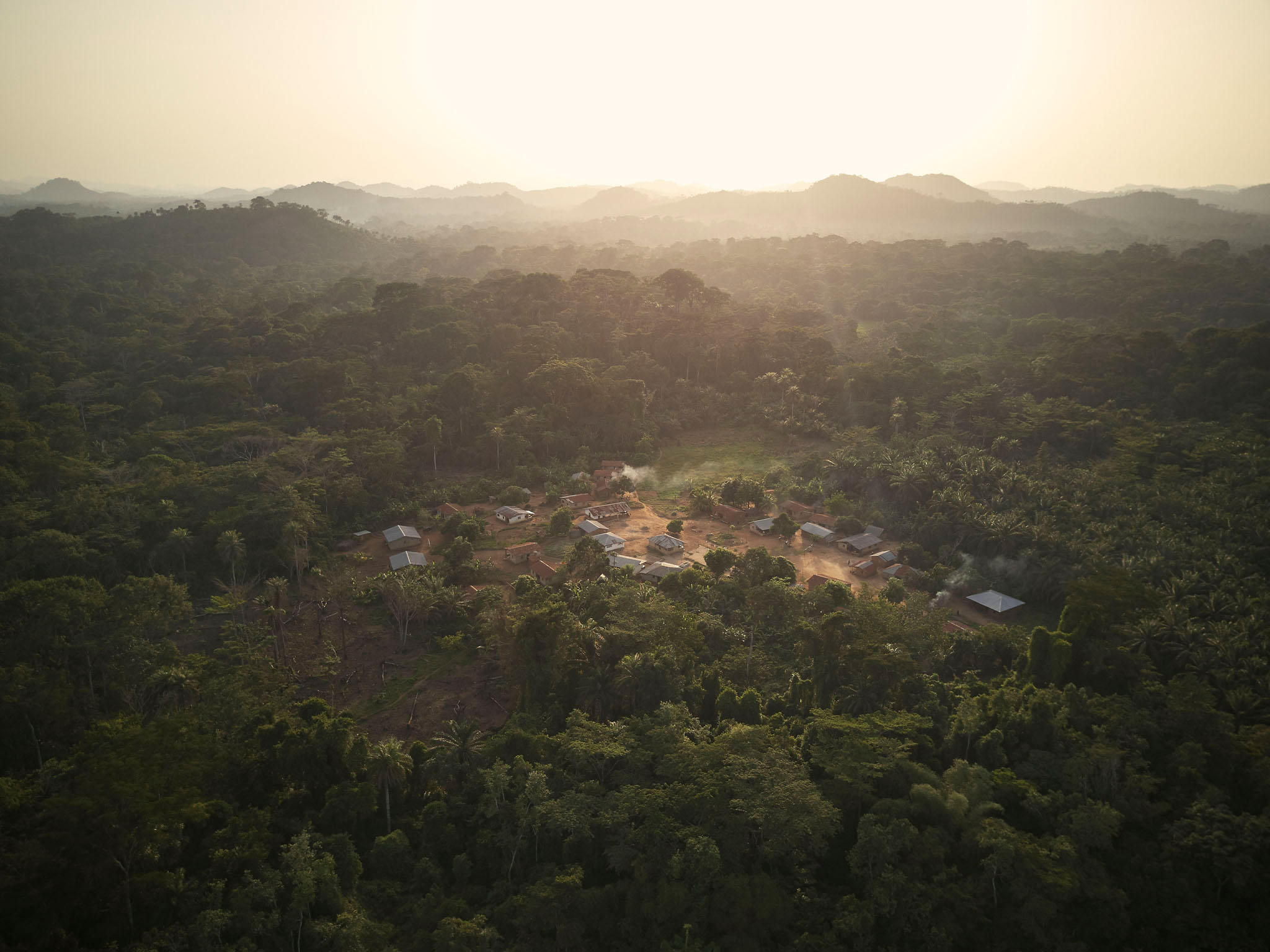
An aerial view of Tombohuaun, an isolated village surrounded by jungle, Kailahun District, Sierra Leone
Unity over adversity. It’s a running theme in the story of Tombohuaun, translation “Tombo’s Wound,” a remote village tucked into the jungle of Sierra Leone’s Eastern Province. The community’s founding legend states that a villager named Tombo cut his foot on a catfish in the river, and the then chief ordered the fish to be caught and killed. Back then, as now, the community came together to put things right: they caught the fish, ate it, and went on to name the town after this symbolic triumph.
This banding together of the community has come to embody its resourceful spirit, with Tombo’s wound the least of its ongoing struggles. In the last 15 years, in addition to enduring an Ebola outbreak, the village has been without clean water since the nation’s civil war, as it has not yet been able to reconstruct the enclosure that once protected its supply. The community of 400 also lacks decent toilets and safe hygiene practices, increasing residents’ susceptibility to water-borne illnesses.
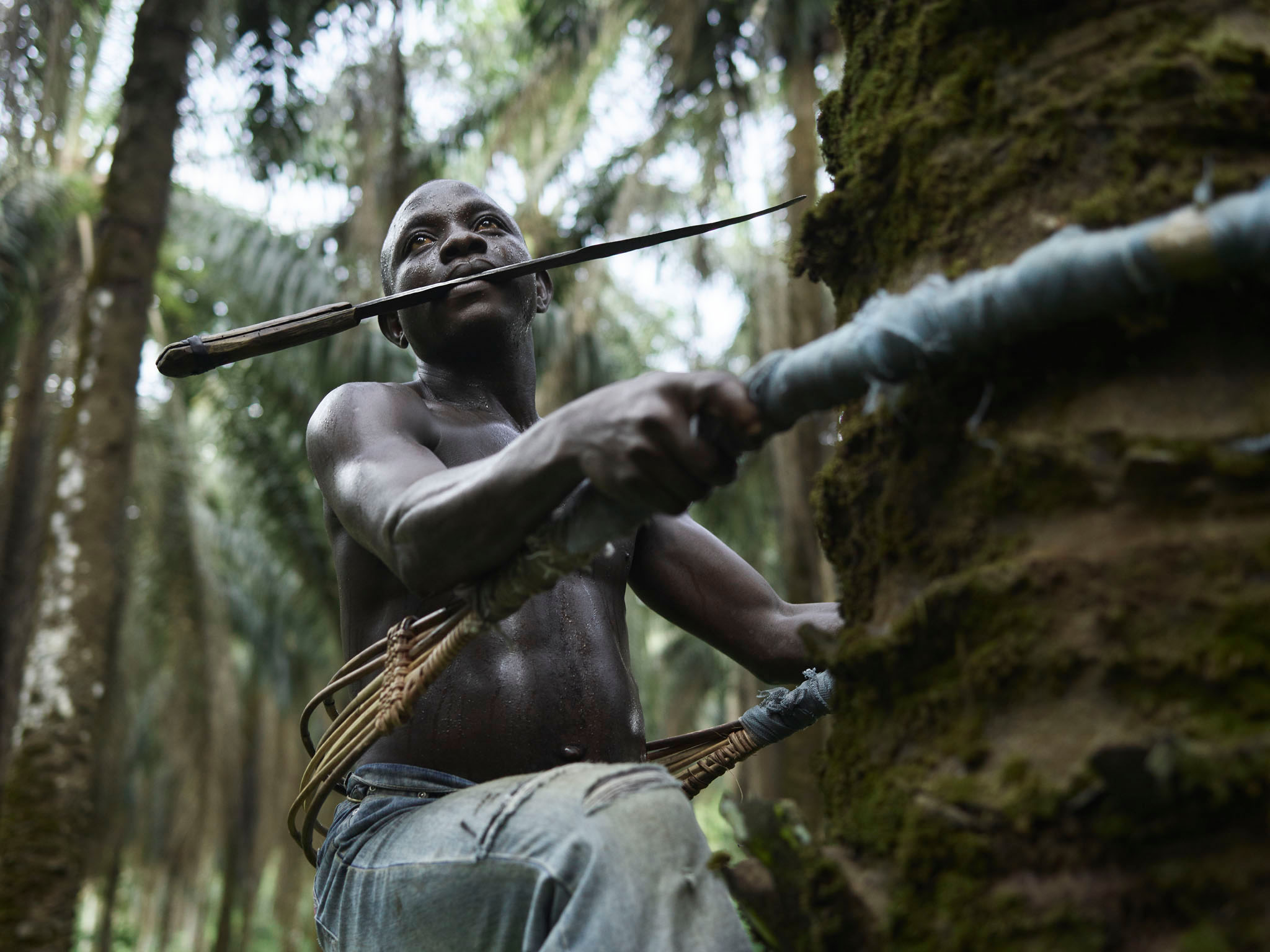
Momoh Babaga, 22, climbs a tree to collect palm kernels which will be processed
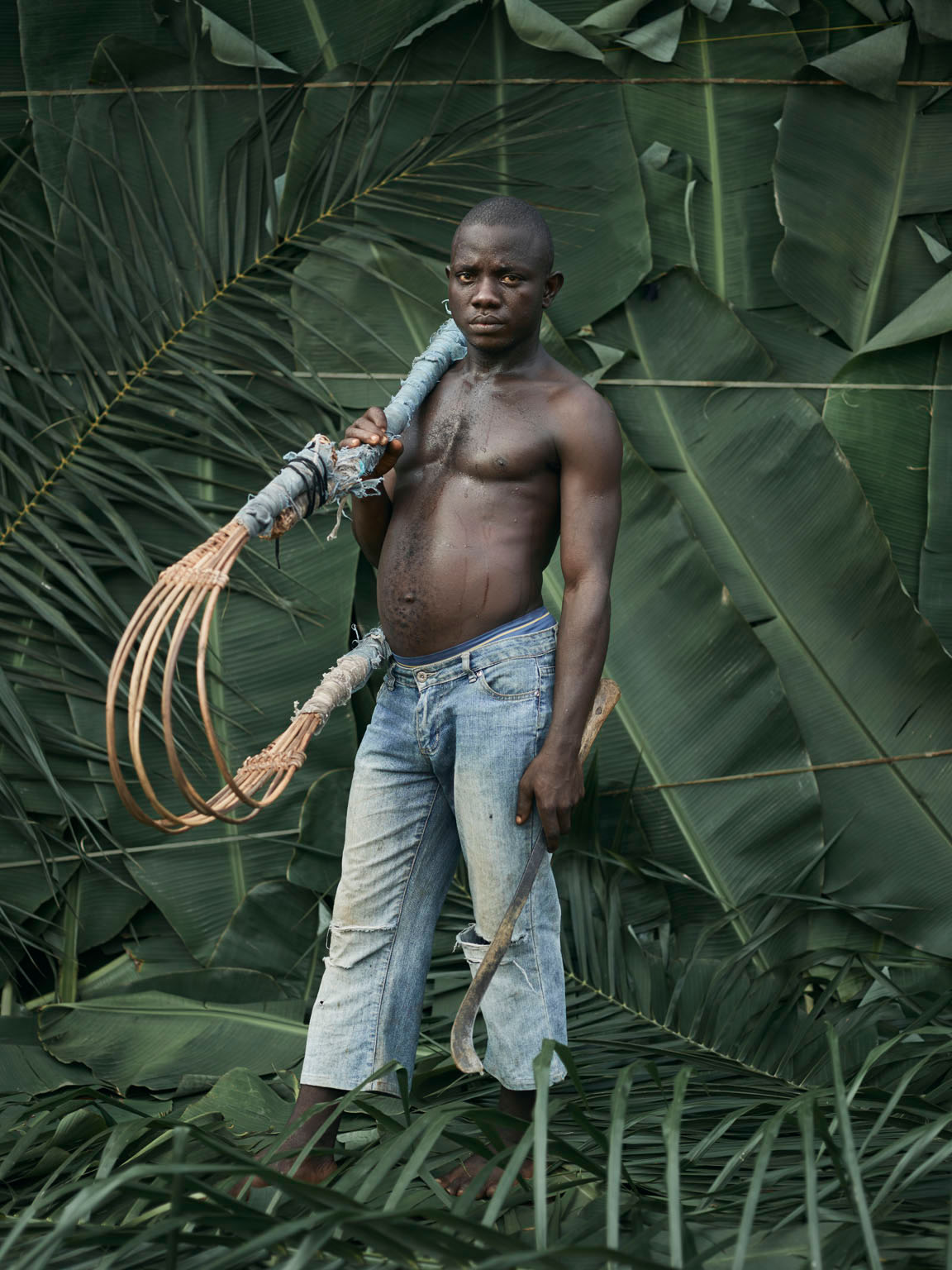
Momoh Babaga, 22, holds the apparatus he uses to climb trees to collect palm kernels
But those dire circumstances were not the only focus of the photo series I was commissioned to make for WaterAid, the international NGO working to bring clean water to Sierra Leone. Rather than just creating images that underscored Tombohuaun’s plight, WaterAid and I envisioned a cultural study of the community that would highlight its resilience, its fraternity, its highly organized structure, and its work ethic. These are all the things that will enable the village to thrive and sustain its clean water resources and practices long after WaterAid has completed its work. These photographs became the visual backbone for WaterAid's Untapped campaign.
In light of those objectives, my photos were to spotlight two main themes—the unique characters within the community and the hard work they do to keep it flourishing.
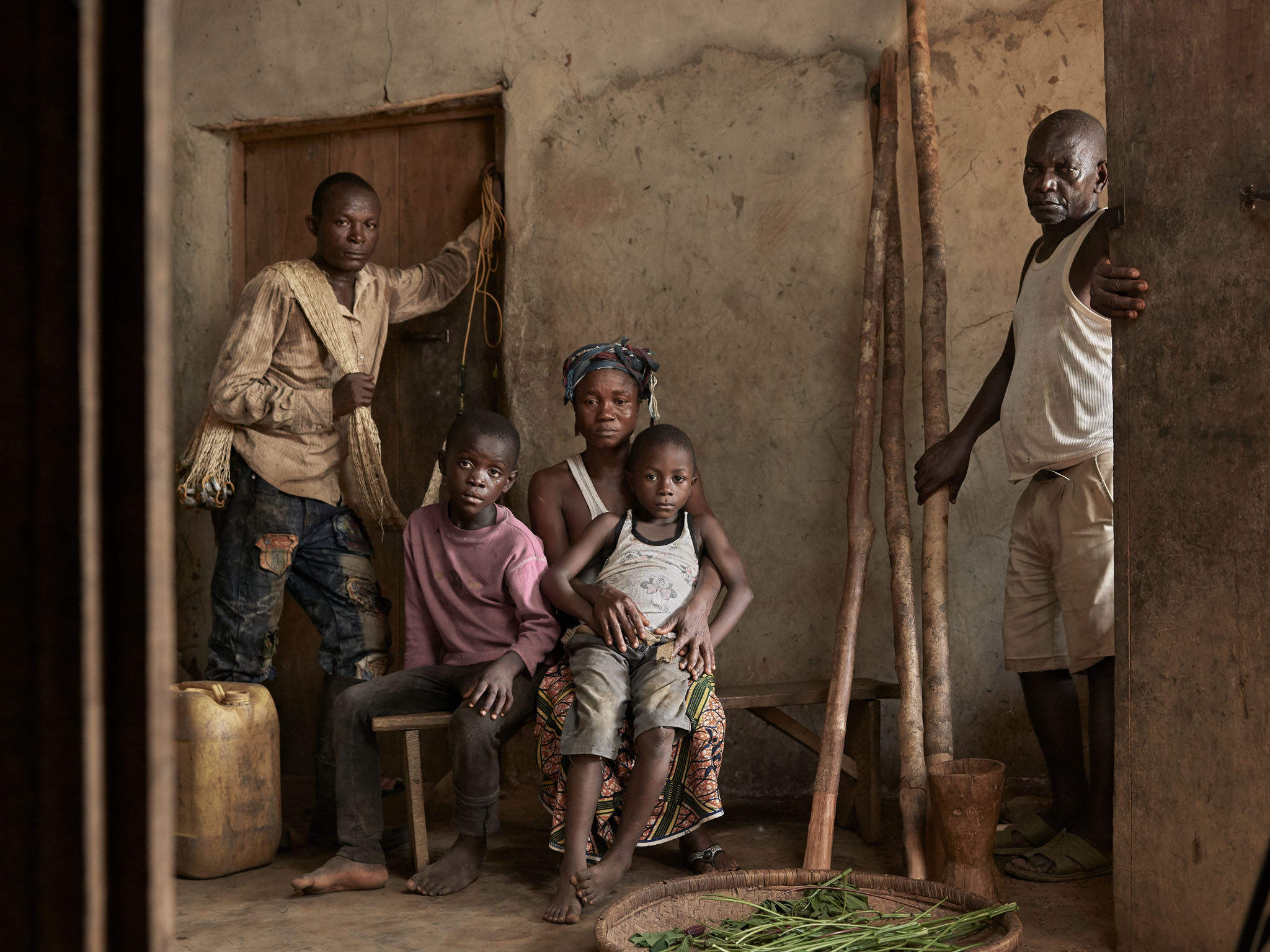
Joe, 6, sitting on the lap of Mariatu, his mother, with the rest of the family posing for a group portrait
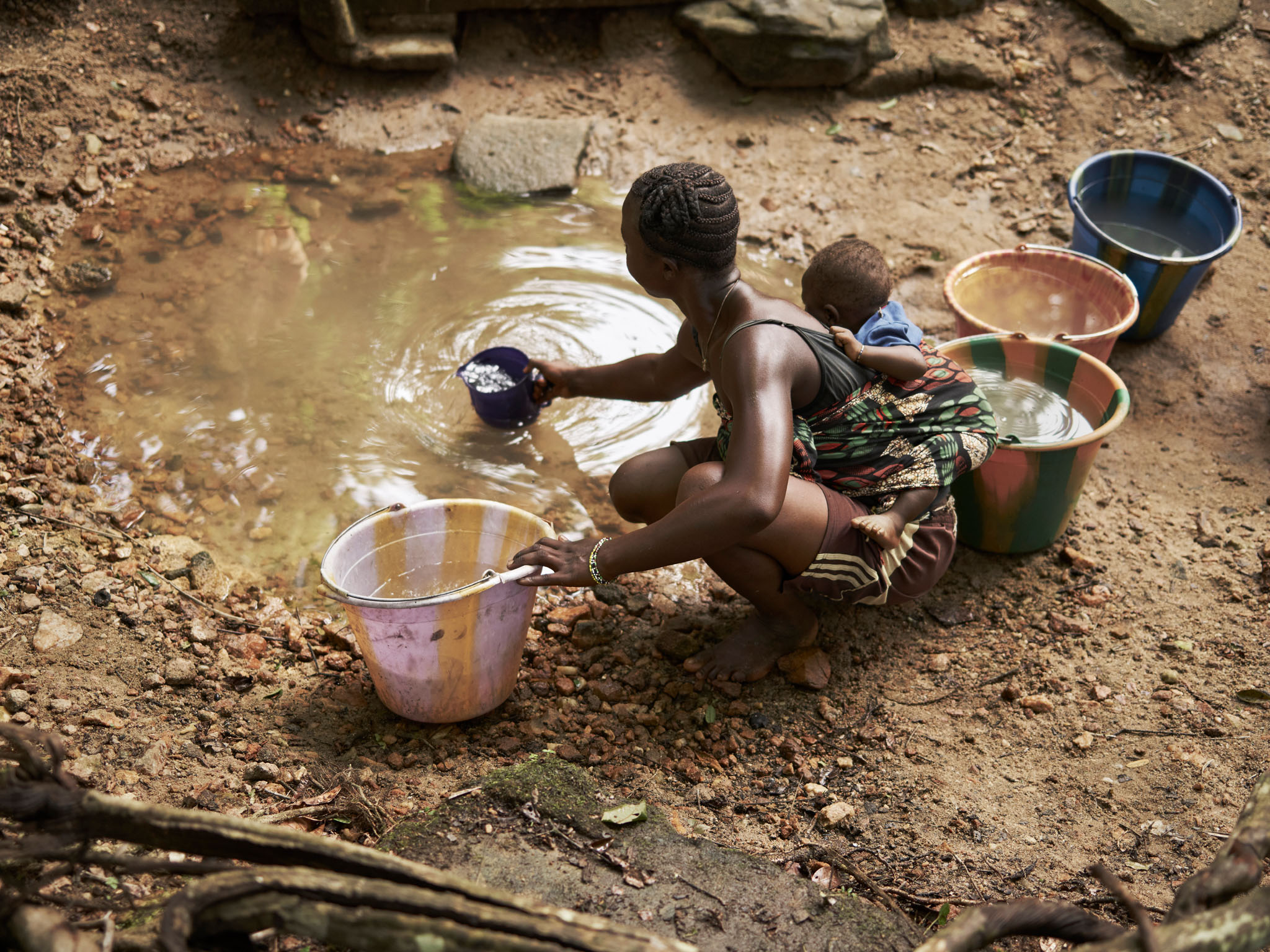
Fatmata, 20, holding her son Bockarie, 10 months old, on her back as she collects dirty water from the natural spring in Tombohuaun. Everyone in the village has experienced persistent problems with worms, diarrhoea and vomiting as a result of drinking this water
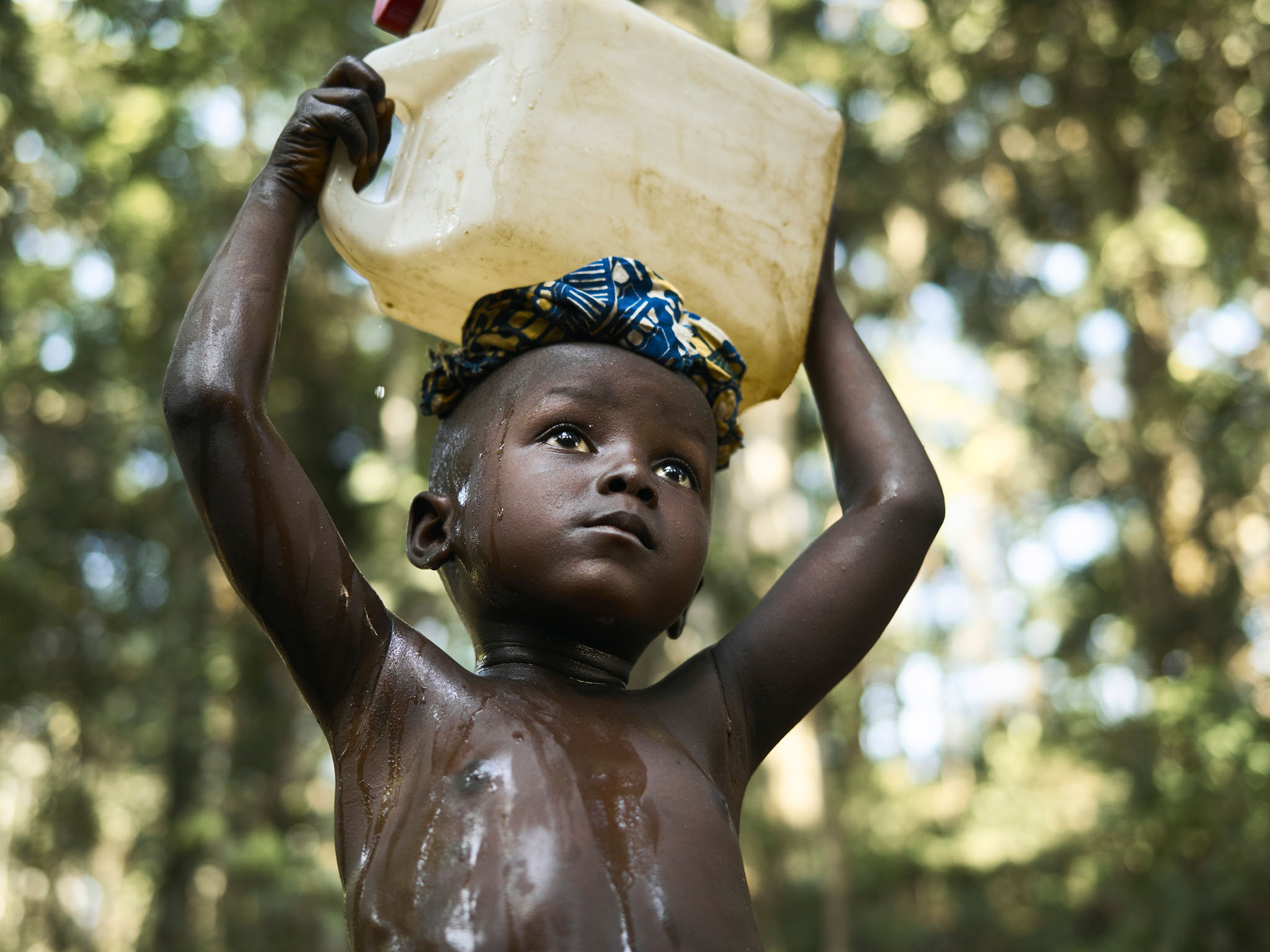
Ibrahim, 4, (Haja's son) carries a container of dirty water on his head on his way home from the source, a natural spring, ten minutes walk from the village of Tombohuaun
With some of the photographic work I’ve done in other parts of Africa, it’s been easy to lean on certain visual crutches—tribal face paint, ornate jewelry, striking clothing. But that’s only skimming the visual surface of the community and the people, and wasn’t in the spirit of this campaign. Digging deeper requires an extended stay, as well as collaborating with locals who have grown up in the area.
Long before we traveled to Tombohuaun, WaterAid had laid the groundwork for a positive, in-depth experience: Staff first surveyed the land to see if they could indeed build the well and bring sustainable clean water, and then Neil Wissink (who became a friend during the project) went into the community to get to the know the villagers, gain trust, create a timeline for the project, and gain permission for the visual component. By the time we arrived to make photographs, the villagers were well aware of our role and purpose, and welcomed our presence. In two weeks time, the standout characters were sure to reveal themselves, and they did: The town beauty queen who artfully styles the women’s hair. The blind man who prays outside his porch. The imam (religious leader) who acts as an elder in the community. The vivacious female leader who delivers the community’s babies.
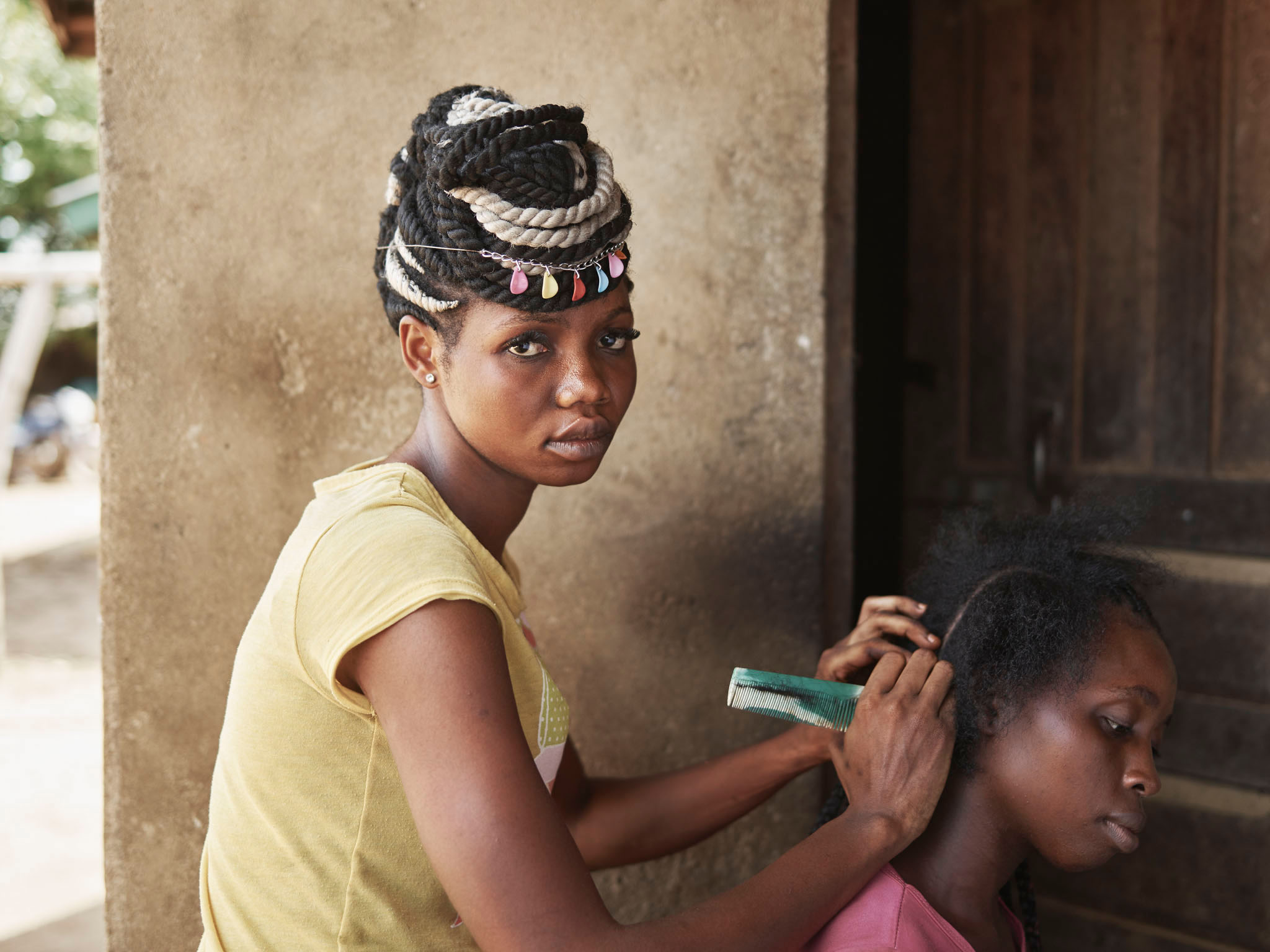
Iye Conteh, 19, braids her sister’s hair on the porch in front of the family home. Iye left the village to seek opportunities in the city, but comes home regularly to see her family
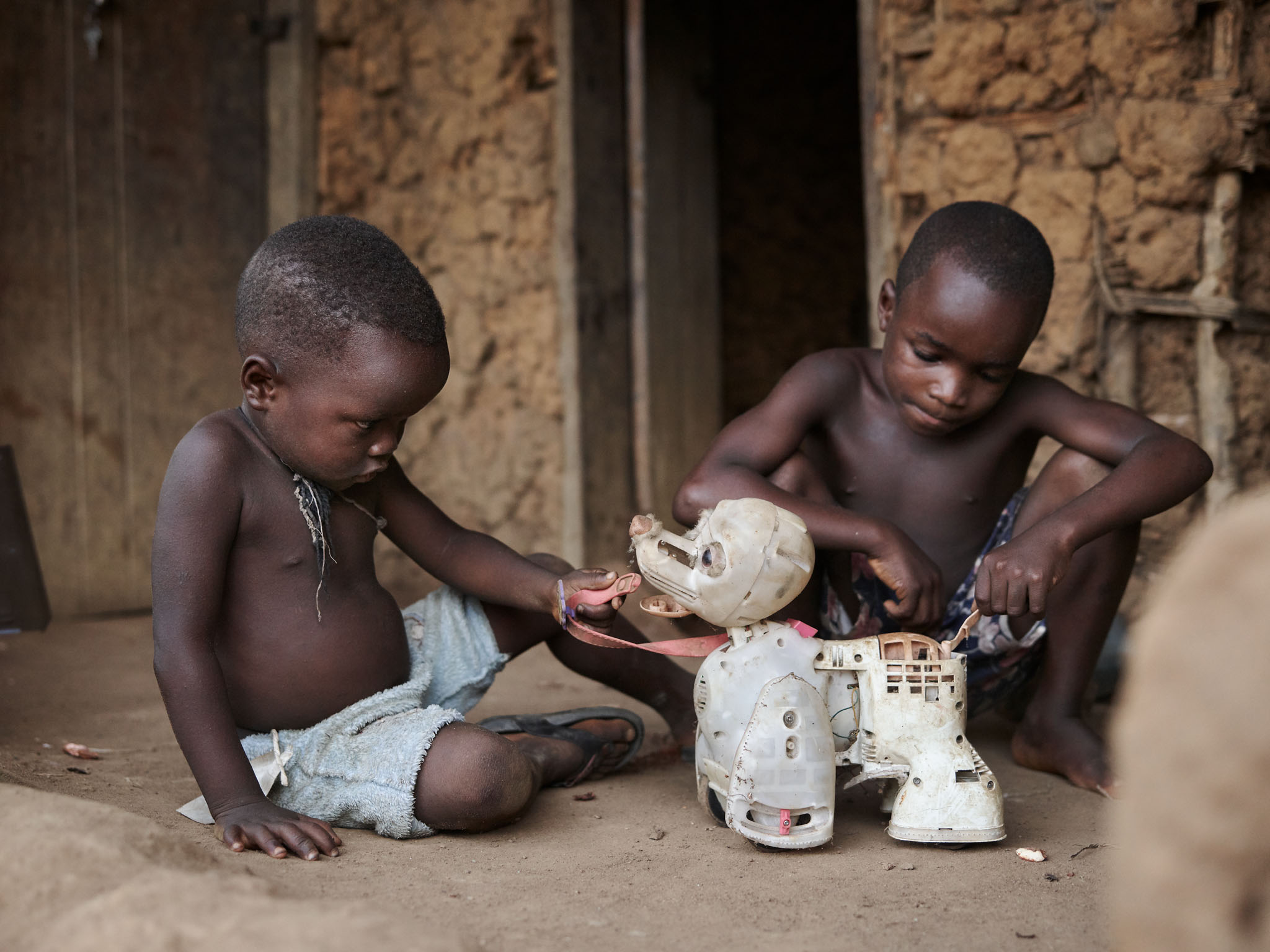
Foudi, 3, left, and Lahai, 7, both children of Matta, play with a toy outside their home
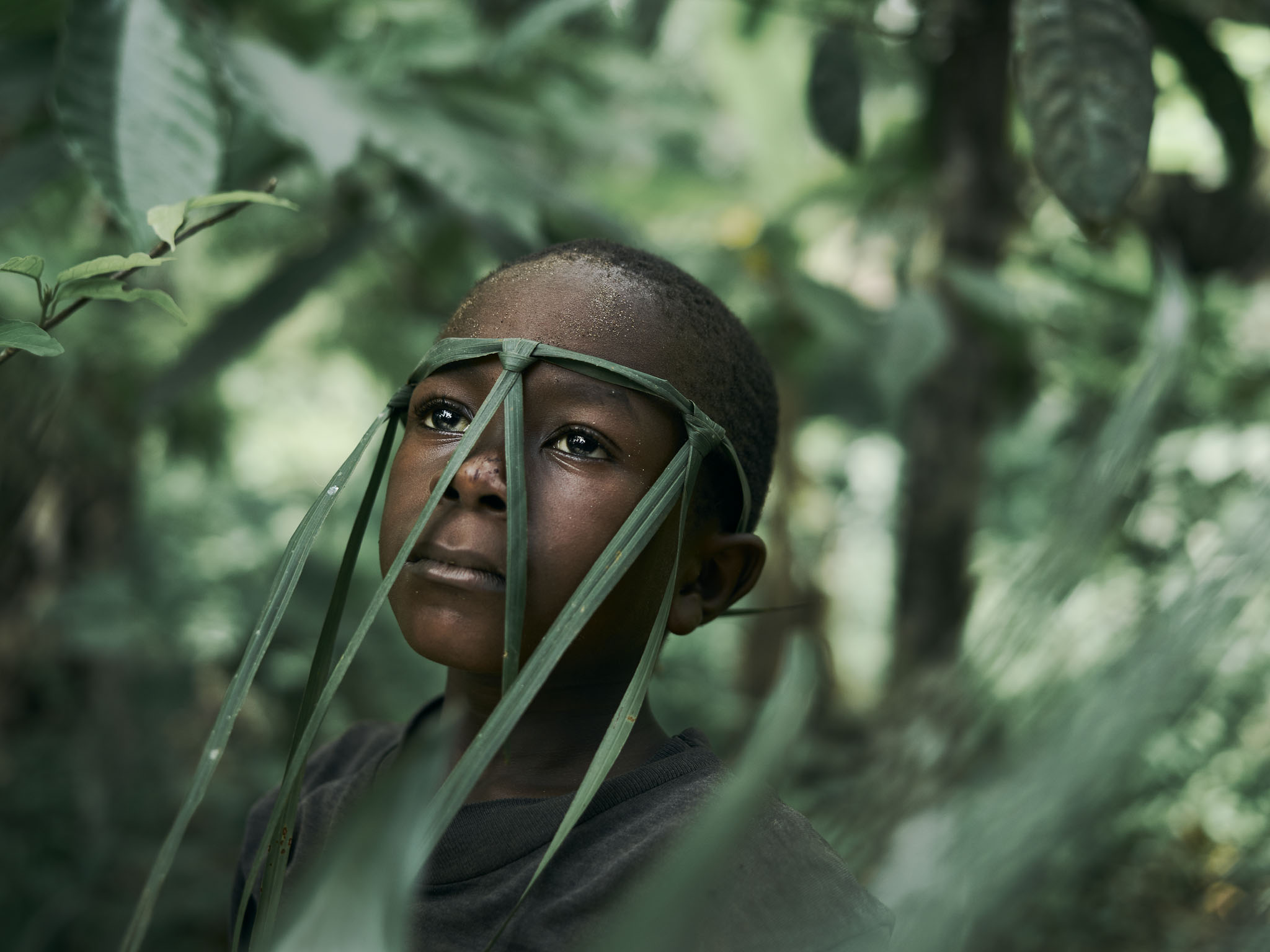
Joe, age 6, nicknamed "Strong Joe" for his energy

Mahmoud Kamara, around 80, blind, sits on his porch to pray. Mahmoud is a former Imam with the Amakiya sect
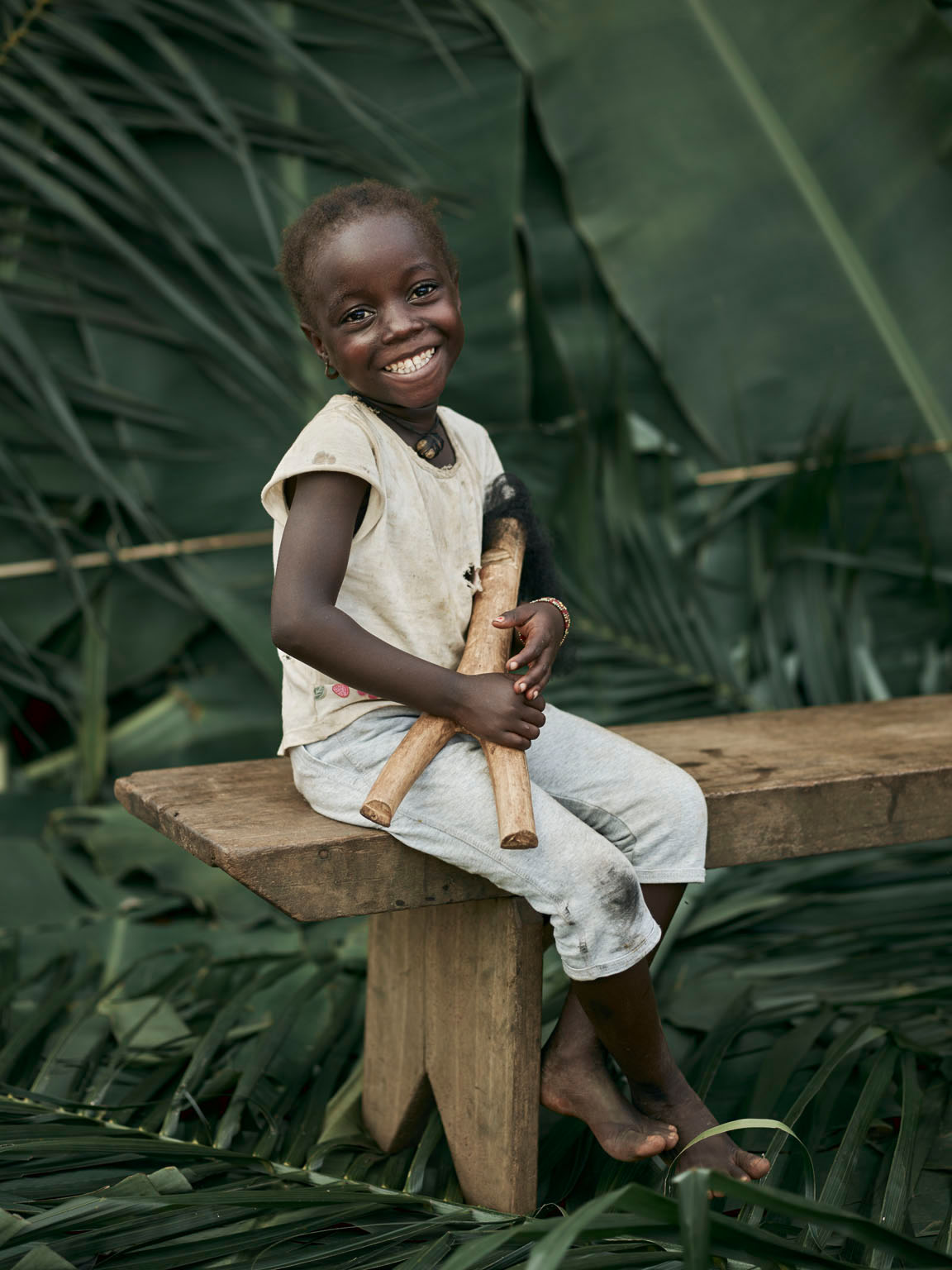
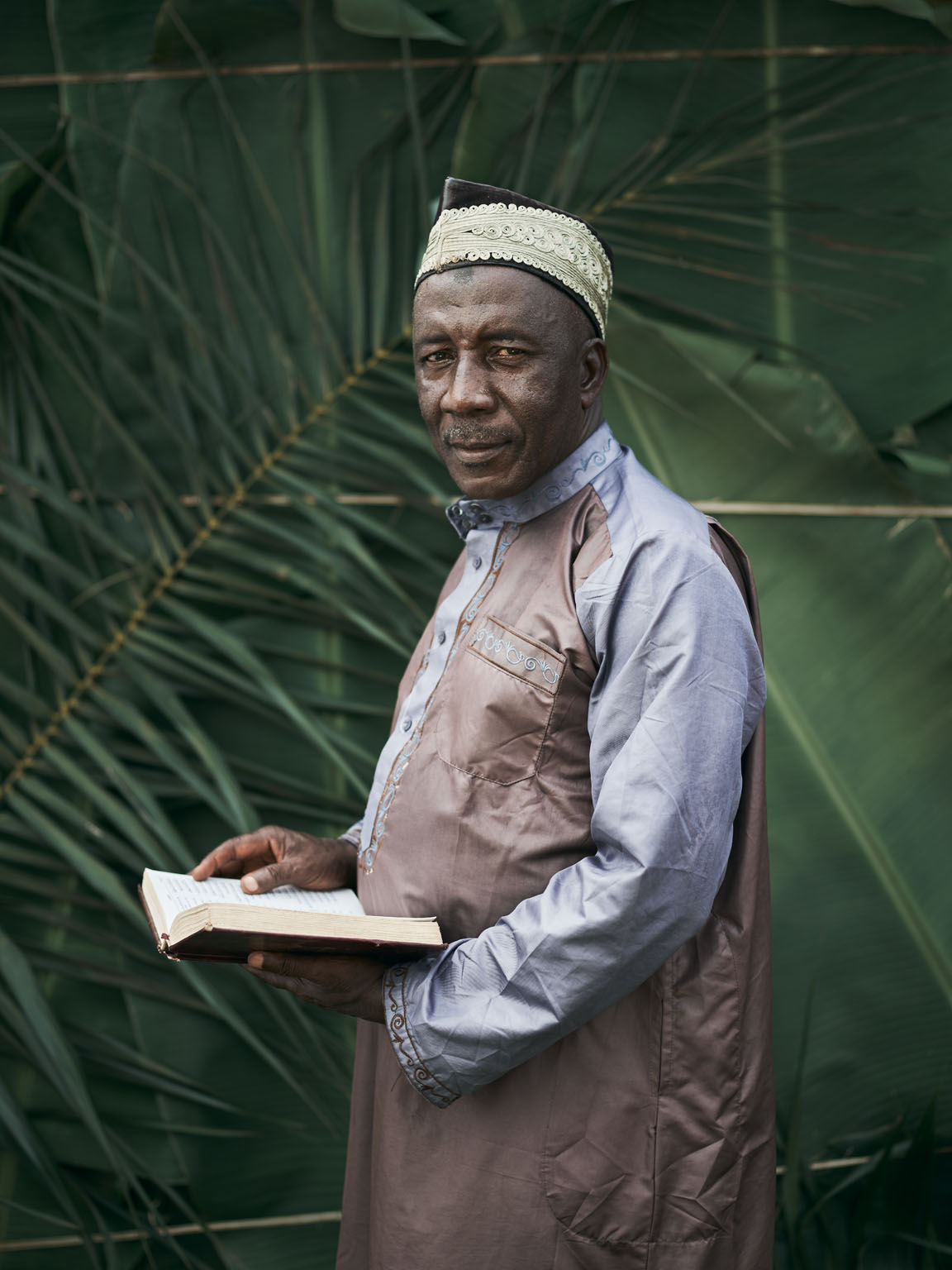
Nancy, 6, holds the doll that her father Sellu made for her, in the village of Tombohuaun
Ibrahim Vandi, 65, who's an imam with the Amadiyya sect in the village of Tombohuaun. Ibrahim was born in the village and is highly respected
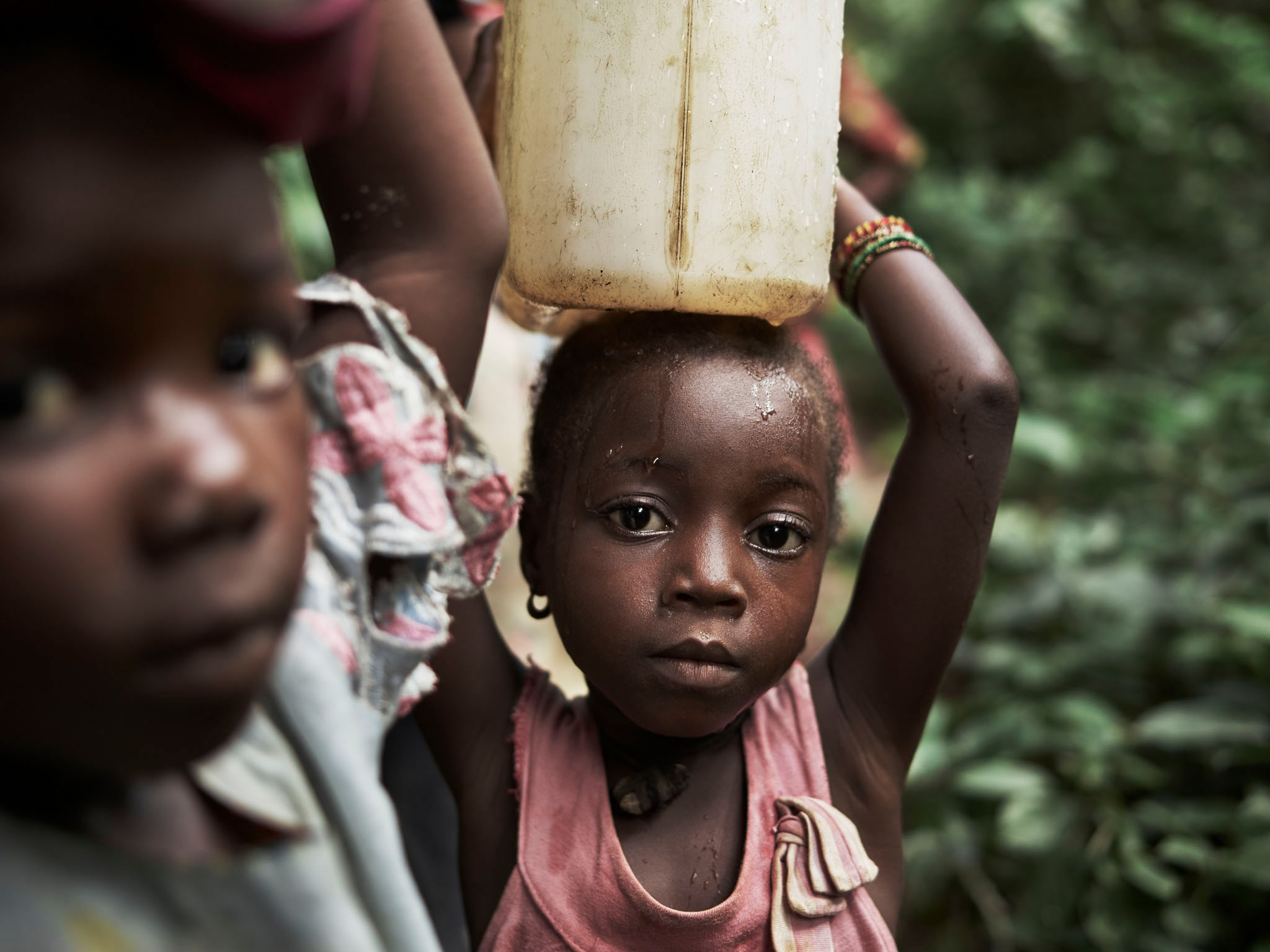
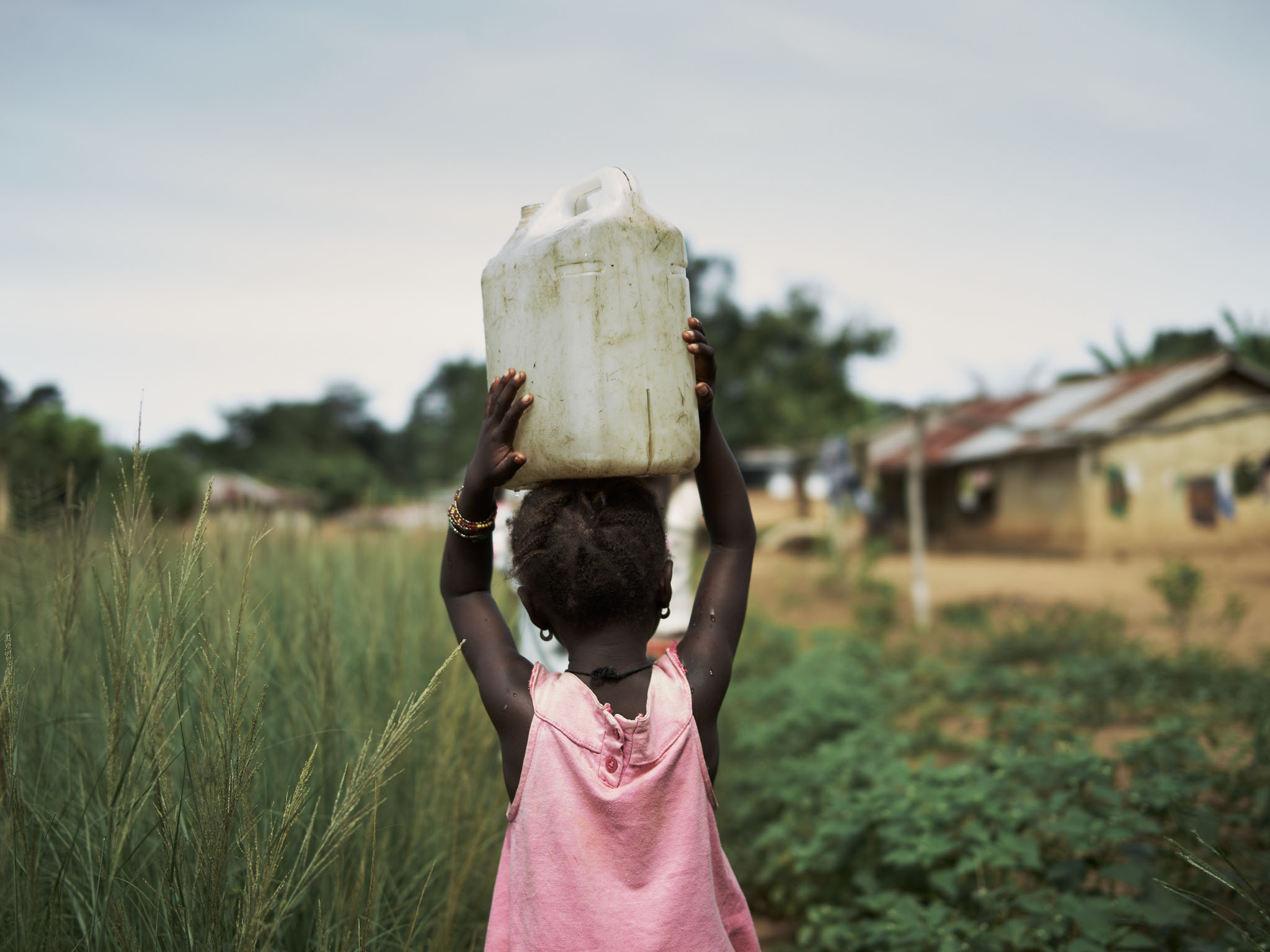
Nancy, 6, carrying a container called a 'gallon' of dirty water collected from a natural spring - the water source for the community of Tombohuaun. The gallon is put on her head by her mother Fatu, whom she goes with to collect water, as it's too heavy for Nancy to do herself. Though a year older than her cousin Lucy, Nancy is a head shorter. Her father says her stunted growth is due to the dirty water. Nancy also recently lost her five year old sister due to this water
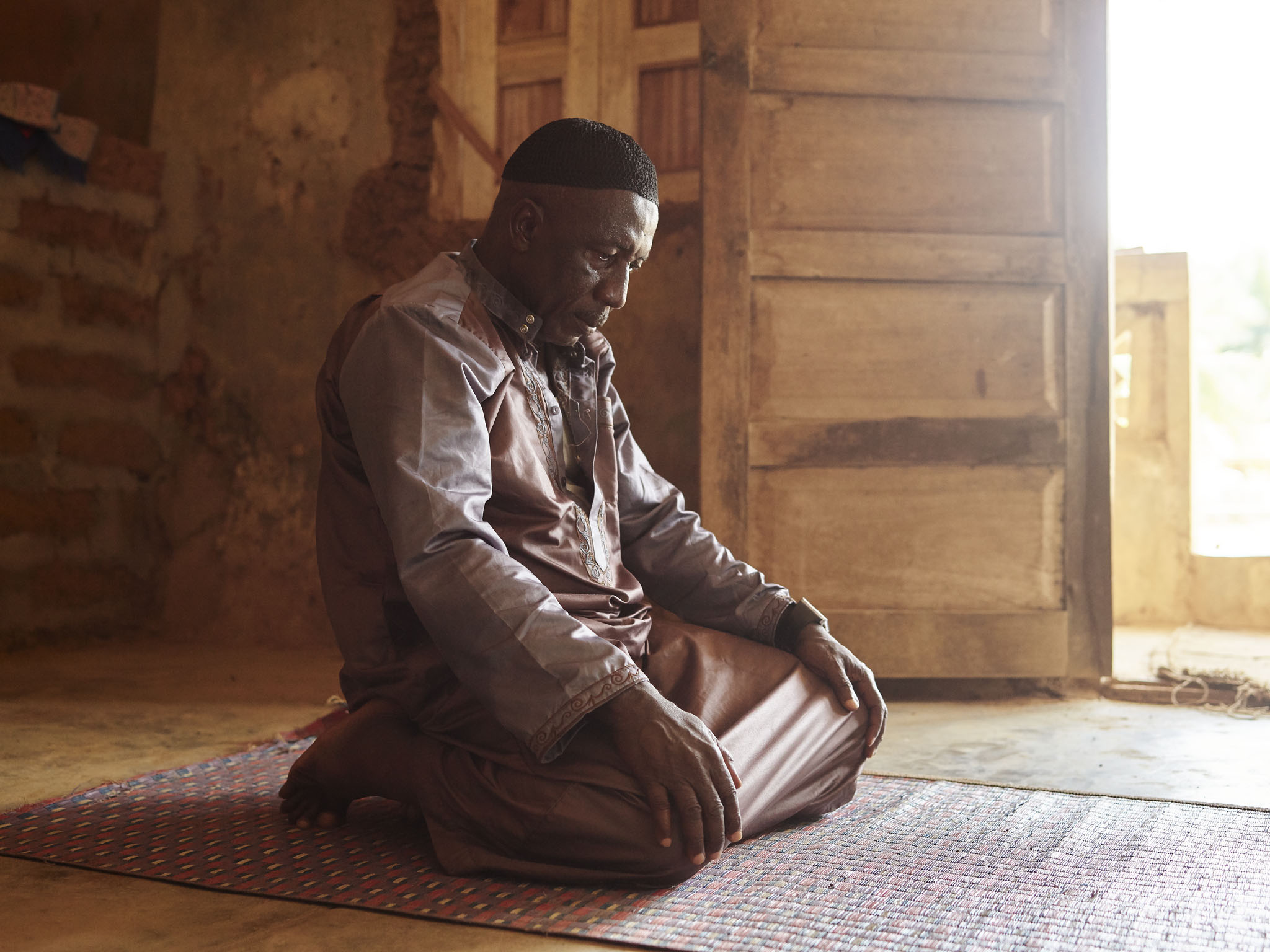
Ibrahim Vandi praying at the local mosque
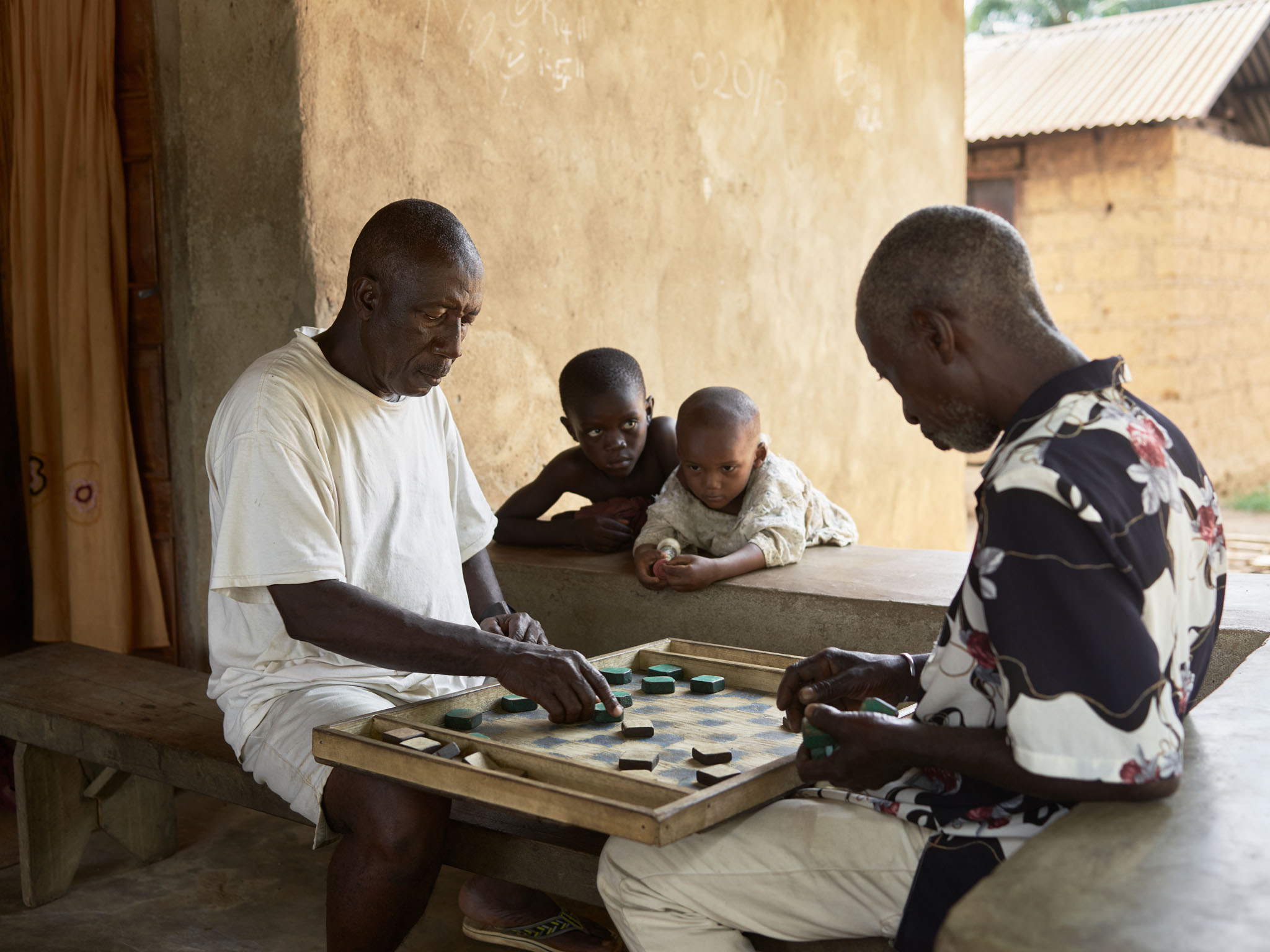
Ibrahim Vandi plays a board game with his neighbor on the front porch of his home

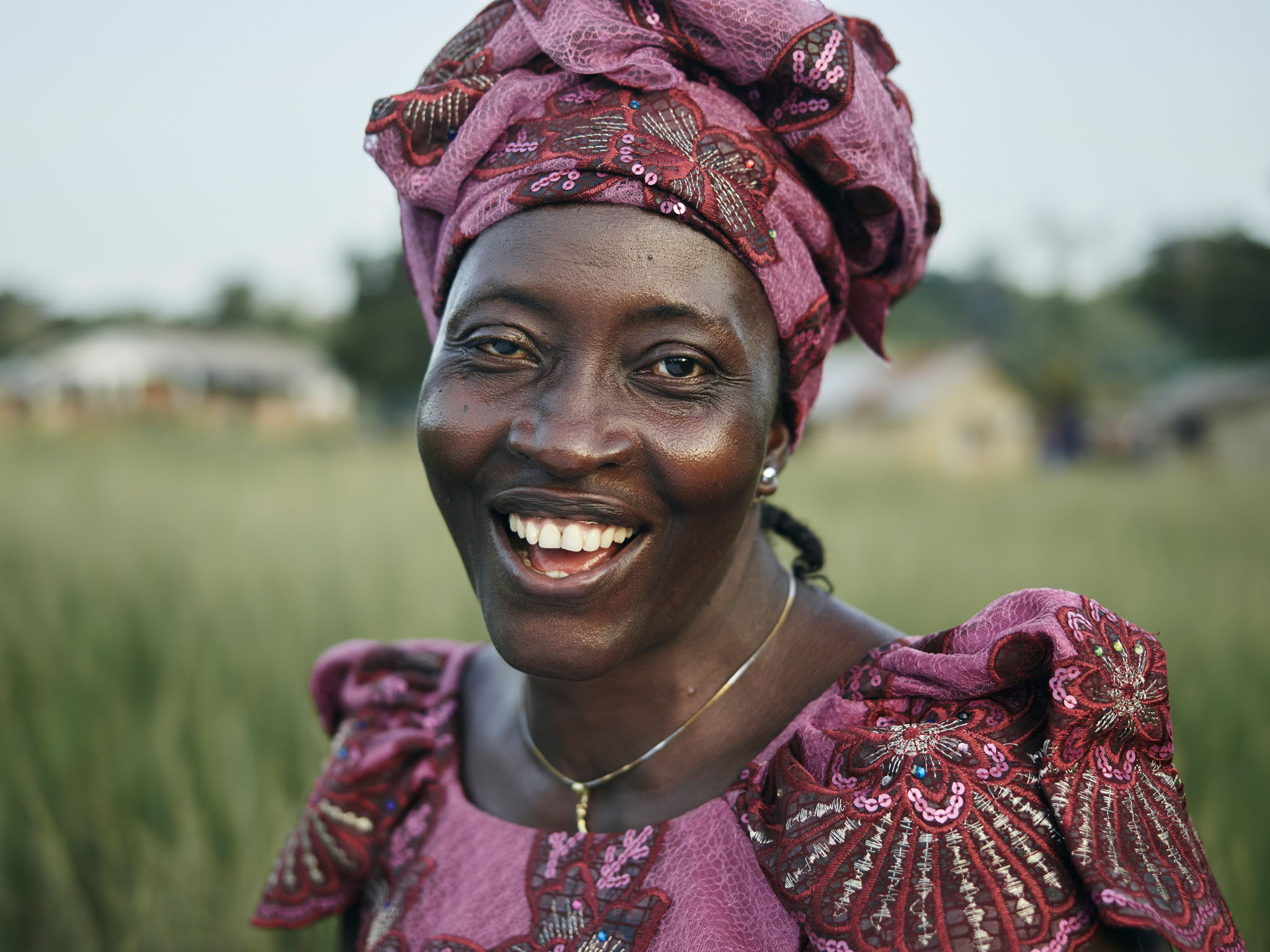
Matu, 40, the life and soul of the village of Tombohuaun. She is a traditional birth attendant and plays an important role within the women's society
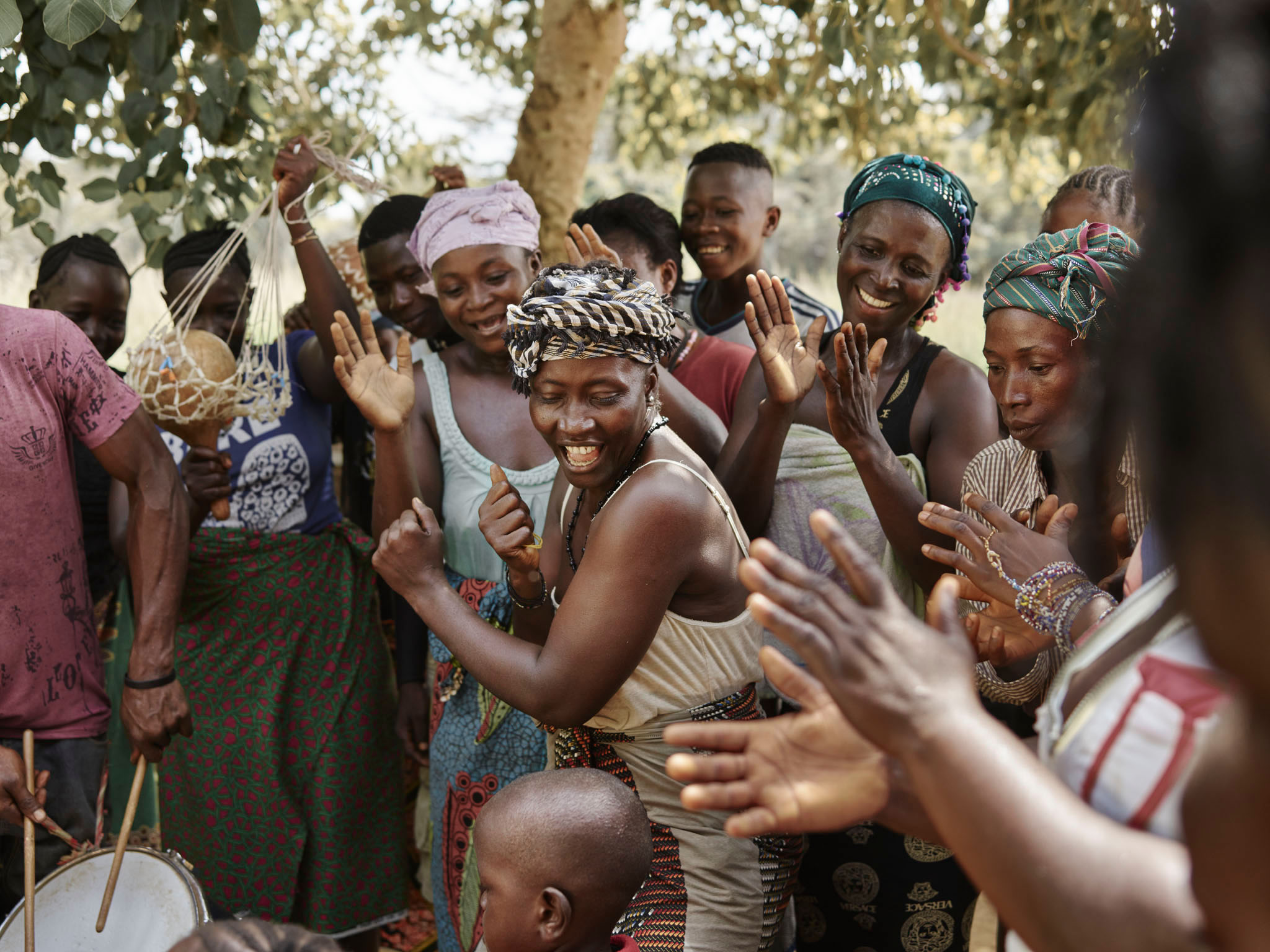
Matu, 40, centre, dancing and singing with other women as the community of Tombohuaun welcome the arrival of the WaterAid team
As characters emerged, I photographed each of them in two ways: I made their portrait in an onsite “studio” built by the villagers; and I photographed them in action, highlighting their role or job in the community. WaterAid would then use these dual photos to paint a complete picture of each subject and their individual story.
For the portraits, instead of setting up a portable studio, we decided to enlist the community’s help to build an outdoor studio onsite in the jungle. This allowed them to brandish their resourcefulness and teamwork and me to have a portrait setting that would compliment the overall style of the series. The studio was set up on the side of a building, with banana and palm leaves laid out on the ground, and bed sheets hung from two poles to act as a giant diffuser.
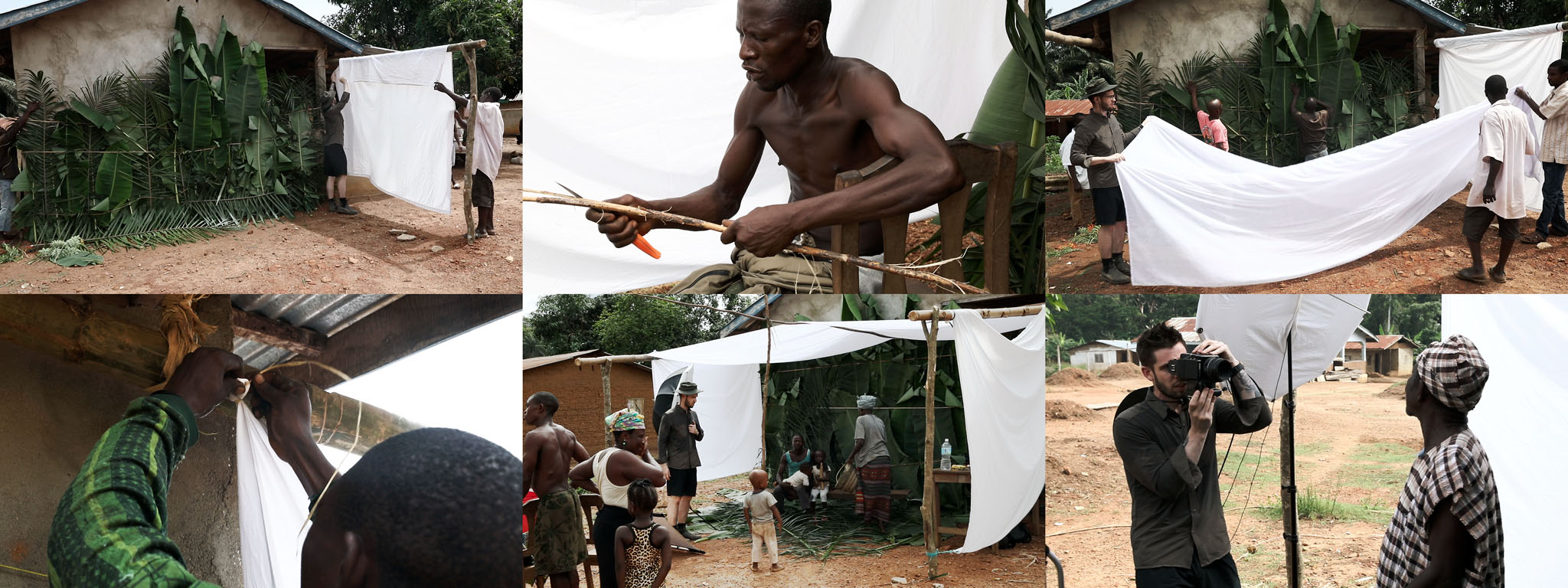
The creation of the "studio"
To make the in-action shots of the villagers, we photographed them processing palm oil and fishing, two important industries for the community. We learned that work is shared equally among the men and women in the village, with each gender performing a select set of duties.
While many of the villagers own their own palm oil plantations, Tombohuaun also has one community plantation run by volunteer villagers, which is where we focused our photography. Profits from this plantation are funneled into a community piggy bank. If a resident has an emergency and needs a loan, they can take money out of this bank as long as they pay it back with interest.
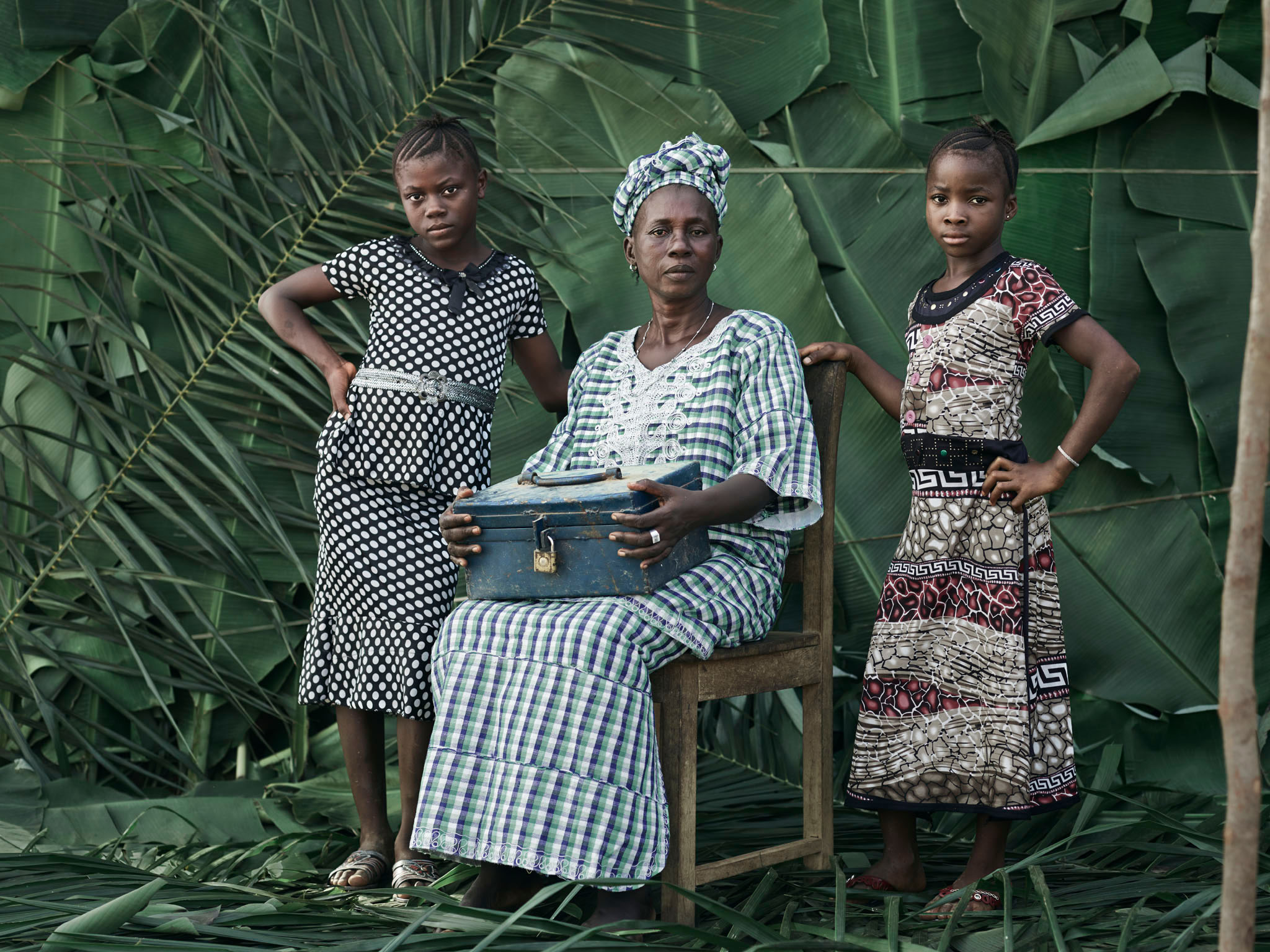
Mayama Mustafa, 60, women's leader and village midwife, with the two children she looks after: Jeneba, left, and Nafisatu, her niece. She holds the savings bank that all women contribute to and share out

Tailu Yajah, brother of the village chief, with his tree climbing equipment and machete, which he uses to harvest palm kernels high up in the trees
Palm oil processing work is divided up like this: The men climb the trees, hack down the palm kernels with machetes, gather the kernels, and then move those to a giant pit where they’re mashed and fermented. The women then filter out the byproduct and melt it to make palm oil that’s sold at the market.
It wasn’t until we delved into the palm oil processing photography that we witnessed in amazement the men’s method for climbing the palm fern trees—using a sling-like apparatus into which they lean their body weight as they scaled the bark with their feet. After clumsily attempting it myself (with the villagers teasing me to come down before I broke my neck), I quietly joked that it might be nice to have a ladder so I could photograph their work from above. Much to my surprise, the next morning a handmade ladder tied together with twine was set out for my photography work. As the villagers held onto the bottom of it, I climbed the rickety (but structurally sound) rungs to the top.
Thanks to their generosity and ingenuity I was able to capture images of their work from a totally unique vantage point.
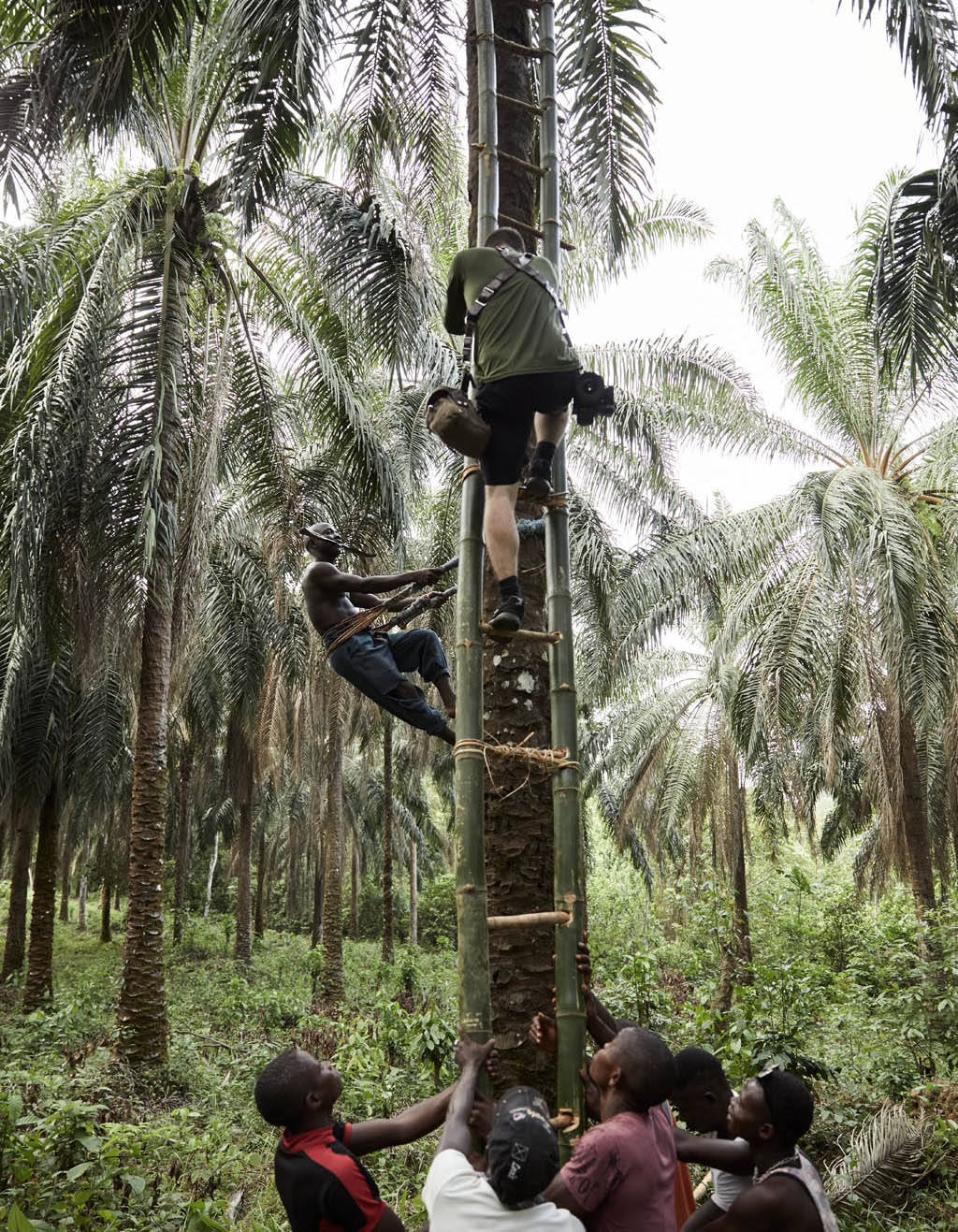

A behind the scenes shot of me photographing by Jesse Korman
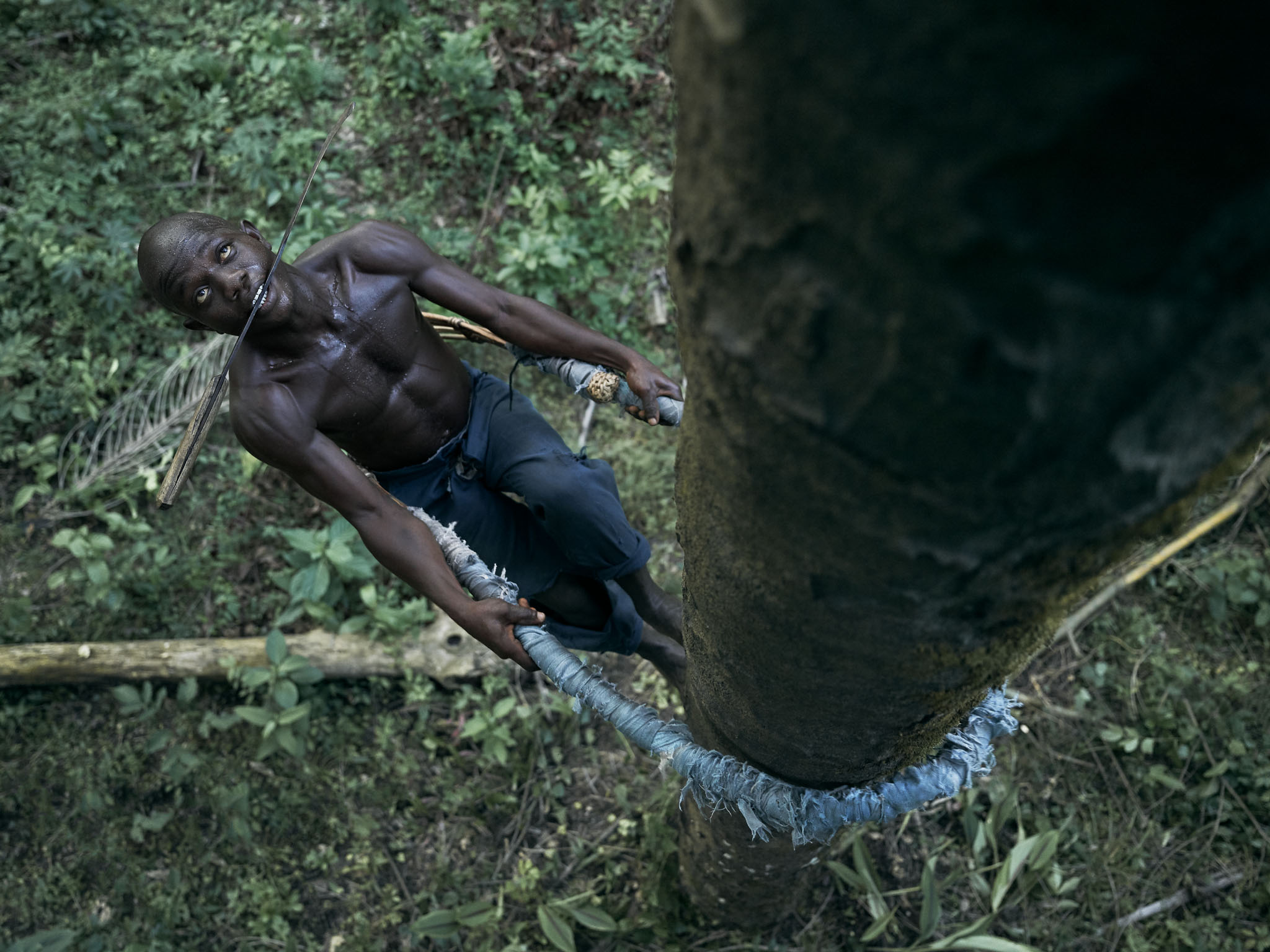
Momoh Babaga, 22, climbs a tree to collect palm kernels which will be processed
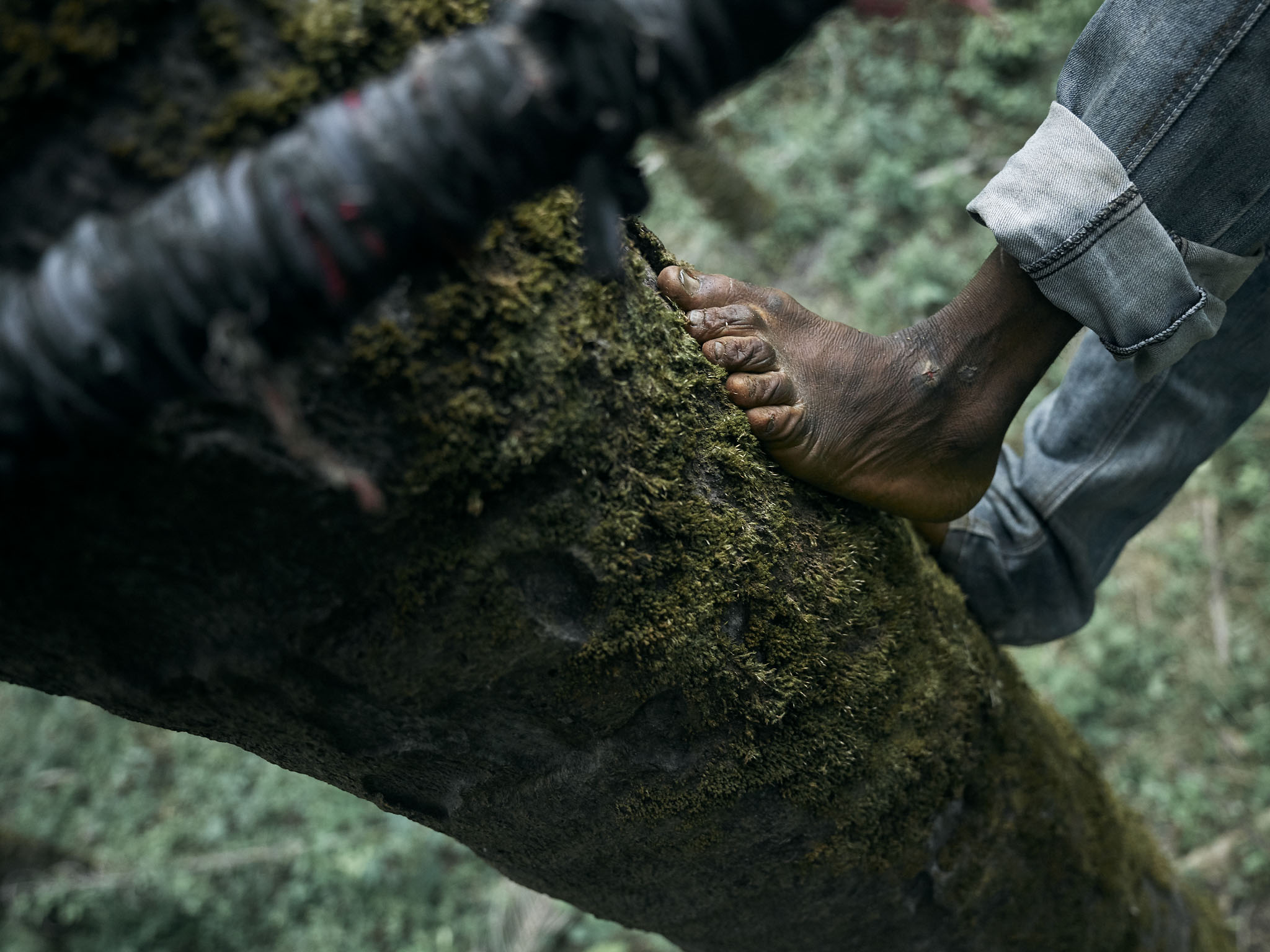
Bare feet stabilize Momoh Babaga as he climbs
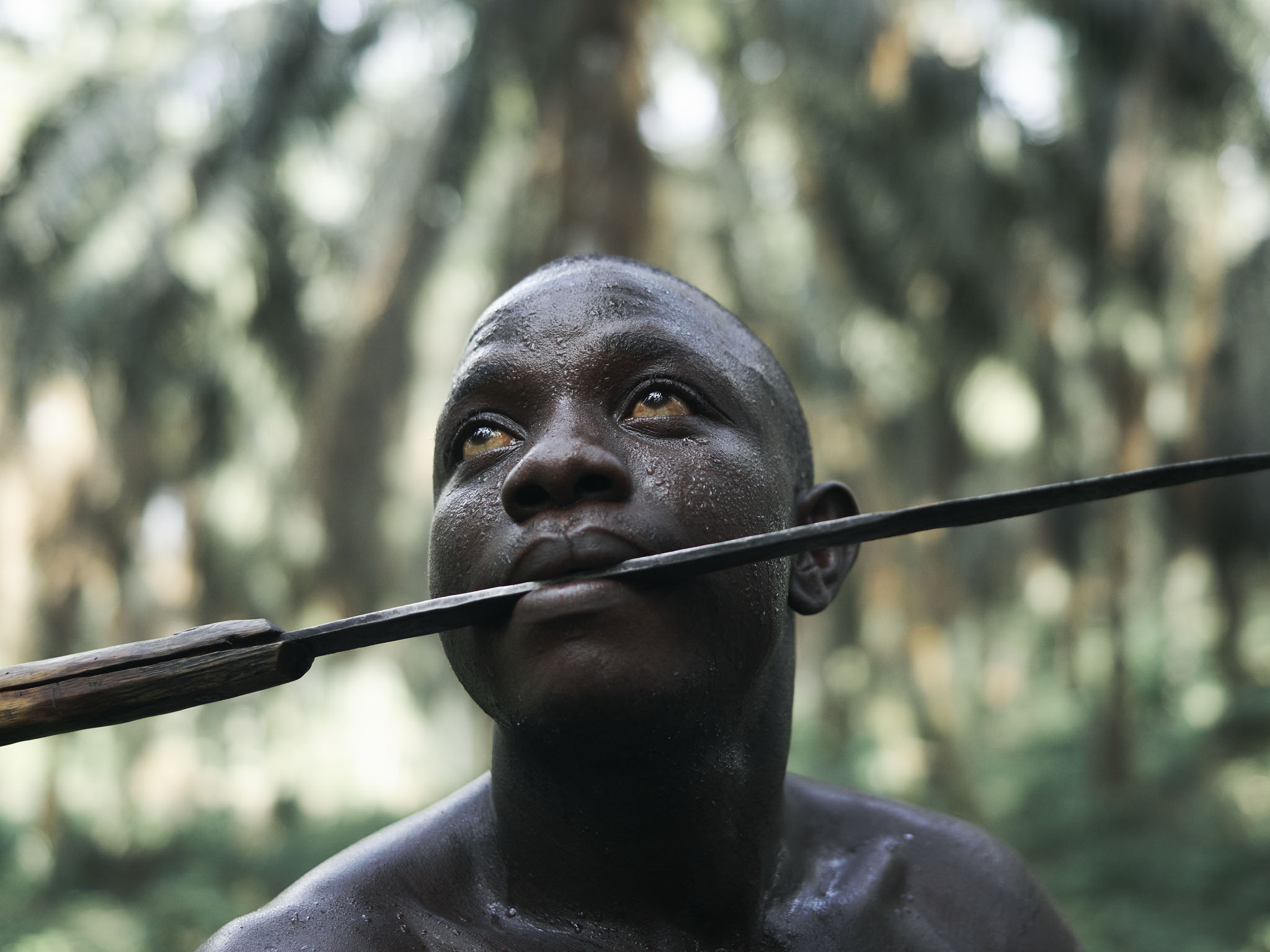
Momoh Babaga
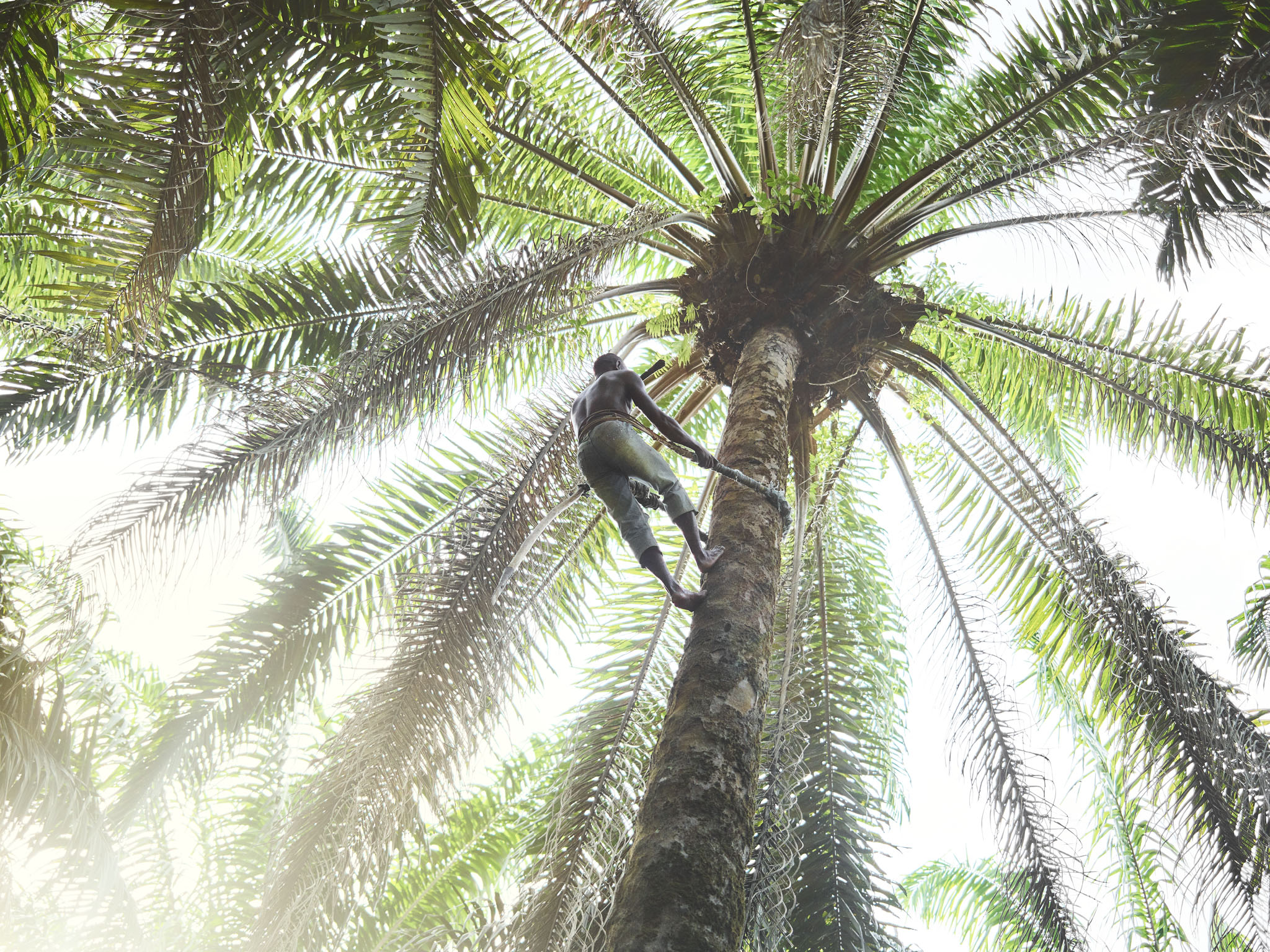
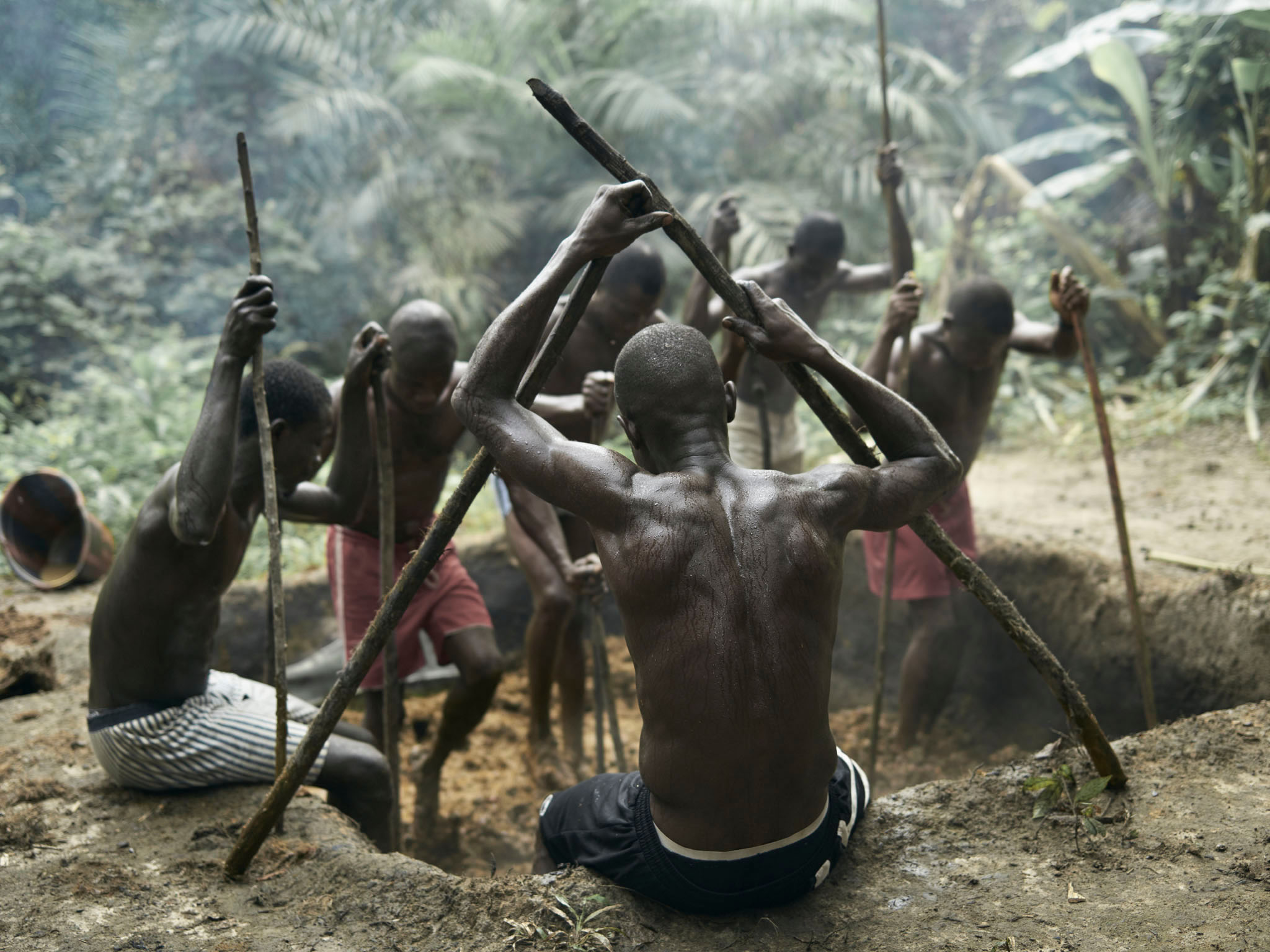

Men work at one of several palm plantations in the village of Tombohuaun, processing palm kernels to make palm oil. The income from this resulting palm oil sales go to a hardship fund, from which anyone in need in the village can draw from

Bare feet are used to mash palm kernels
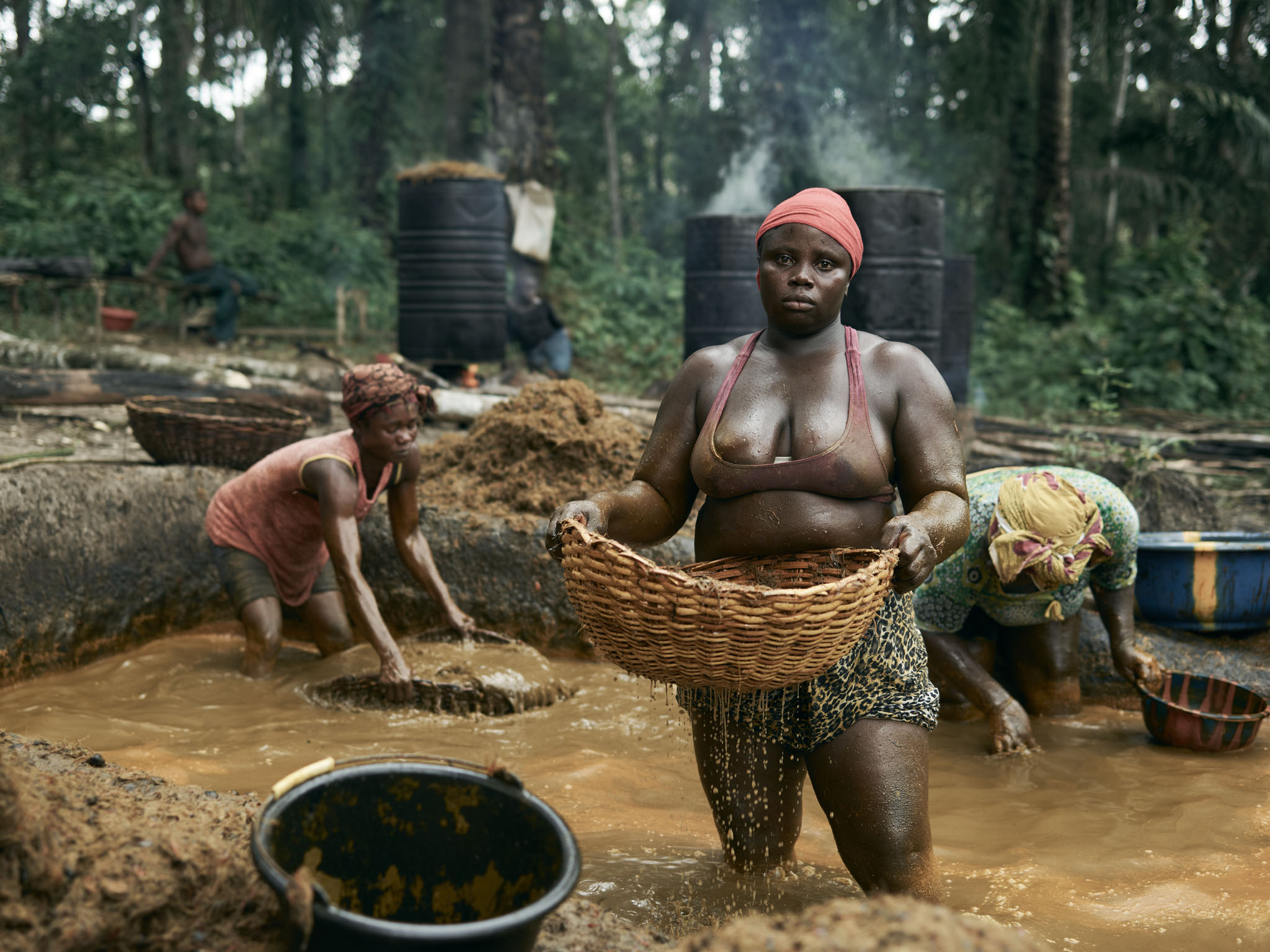
Sallay Yajah, 30, sifts palm kernels at the community palm plantations, processing palm kernels to make palm oil. The income from the resulting palm oil sales go to a hardship fund, from which anyone in need in the village can draw from

Aruna Bockarie, 24, processing palm kernels into oil
We also photographed the villagers fishing for giant mud cat, which is done in the river using handmade nets. Making photographs of their work from the shore wasn’t an option: If you shoot it from the shore, it’ll look like it was shot from the shore. So I slipped out of my shoes (going barefoot helps me to keep my balance in moving water) and into river up to my chest with my medium format camera. Sure, it’s a risk to carry expensive equipment into the water, but to me, getting the better shot is always more important. And the best vantage point for river images is just above the surface of the water.
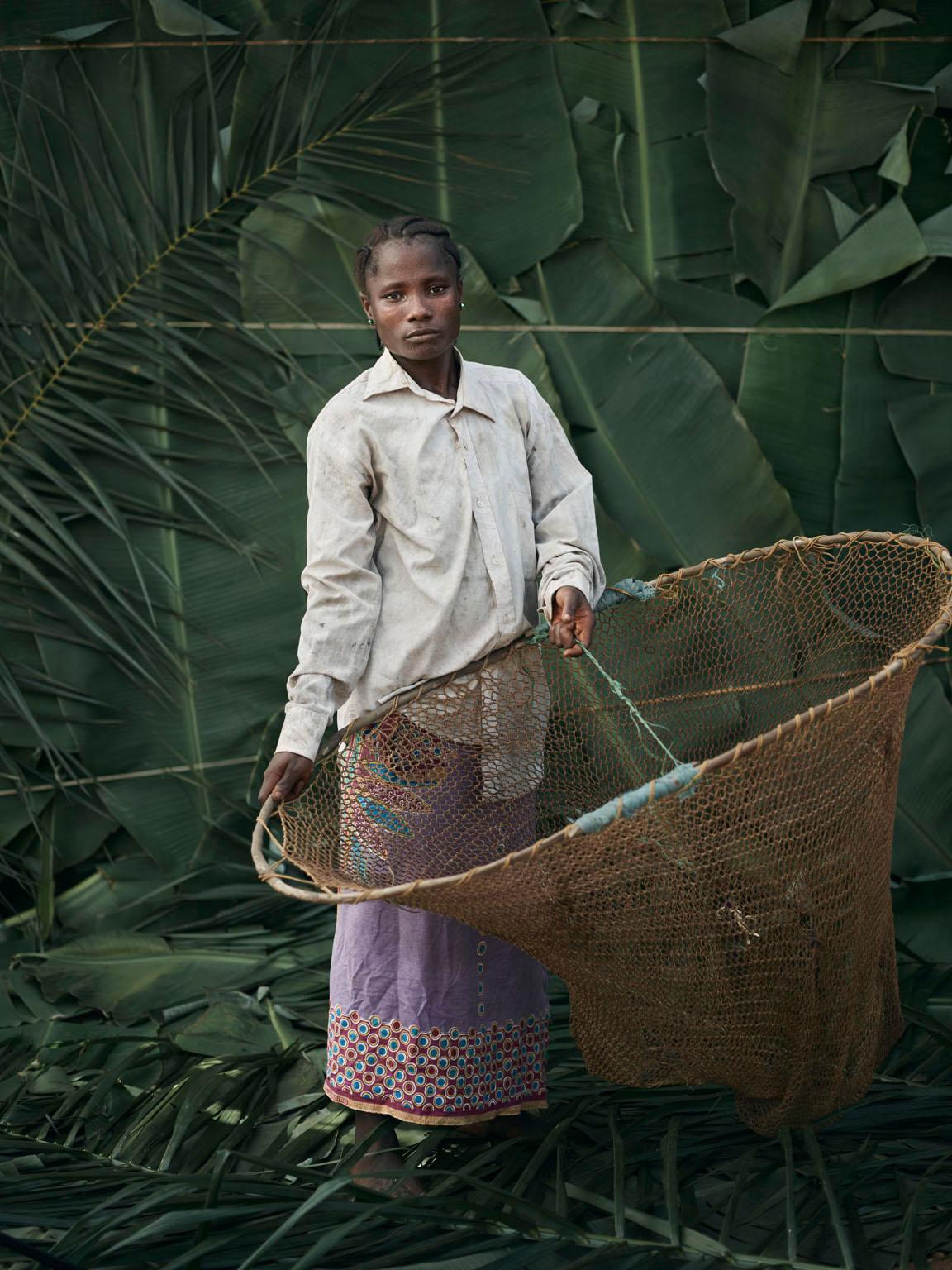
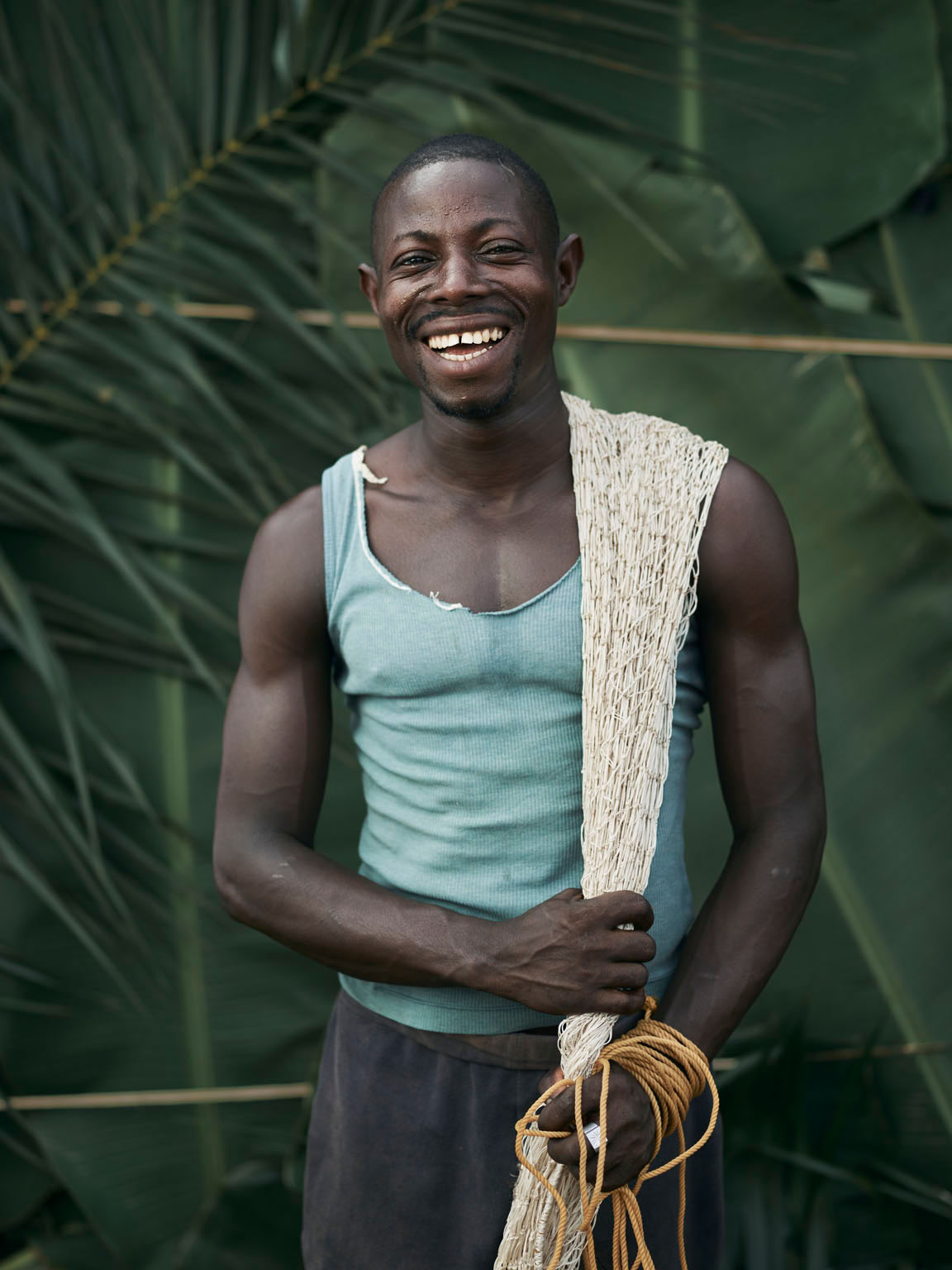
Matta Saffah, 27, holding home-made hooped nets used for fishing
Sellu Smart, holding home-made fishing nets
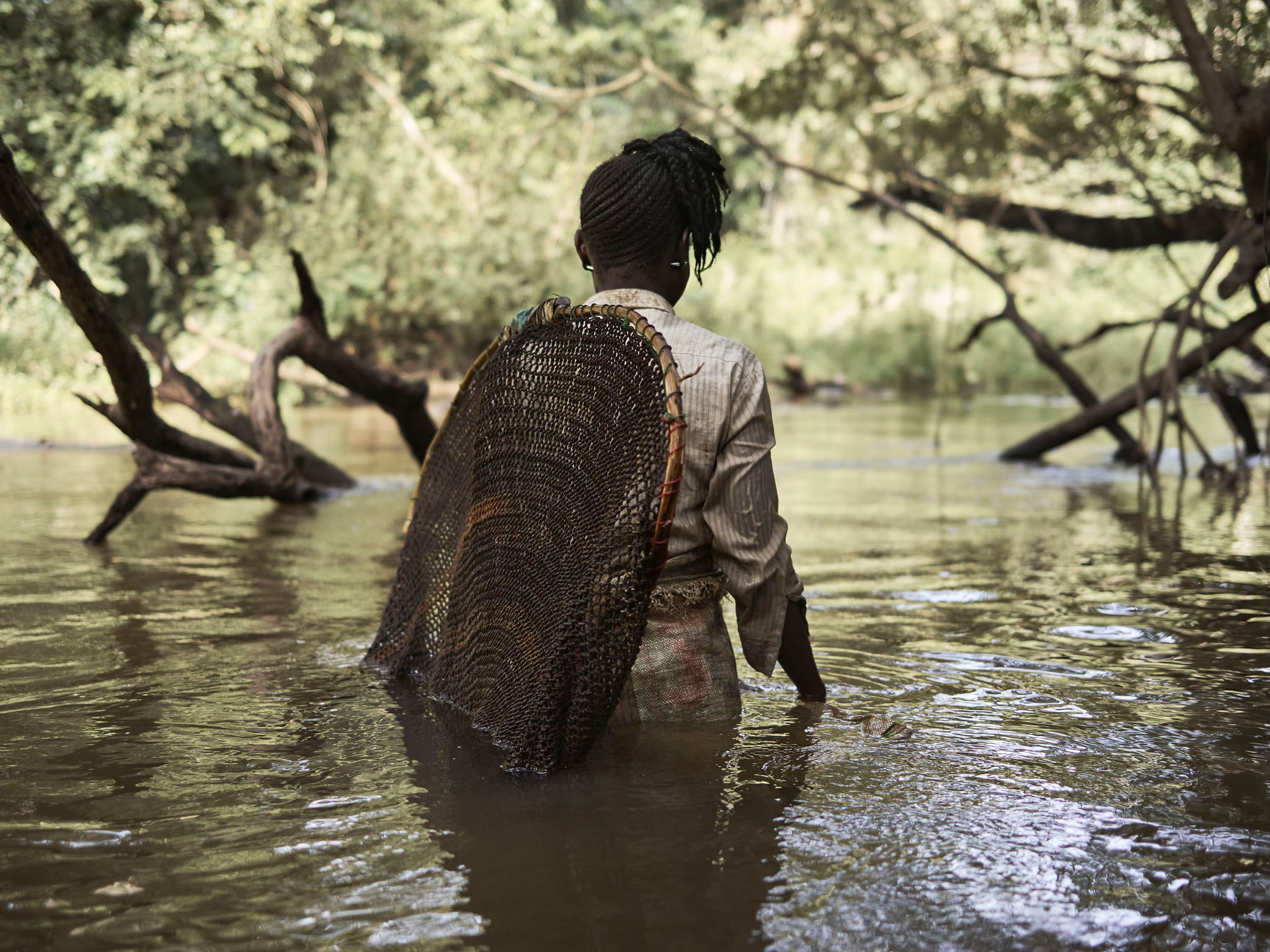
Matta Saffah, 27, fishing using home-made hooped nets in the River Male near the village of Tombohuaun. It takes two people to fish this way and usually a lot of patience
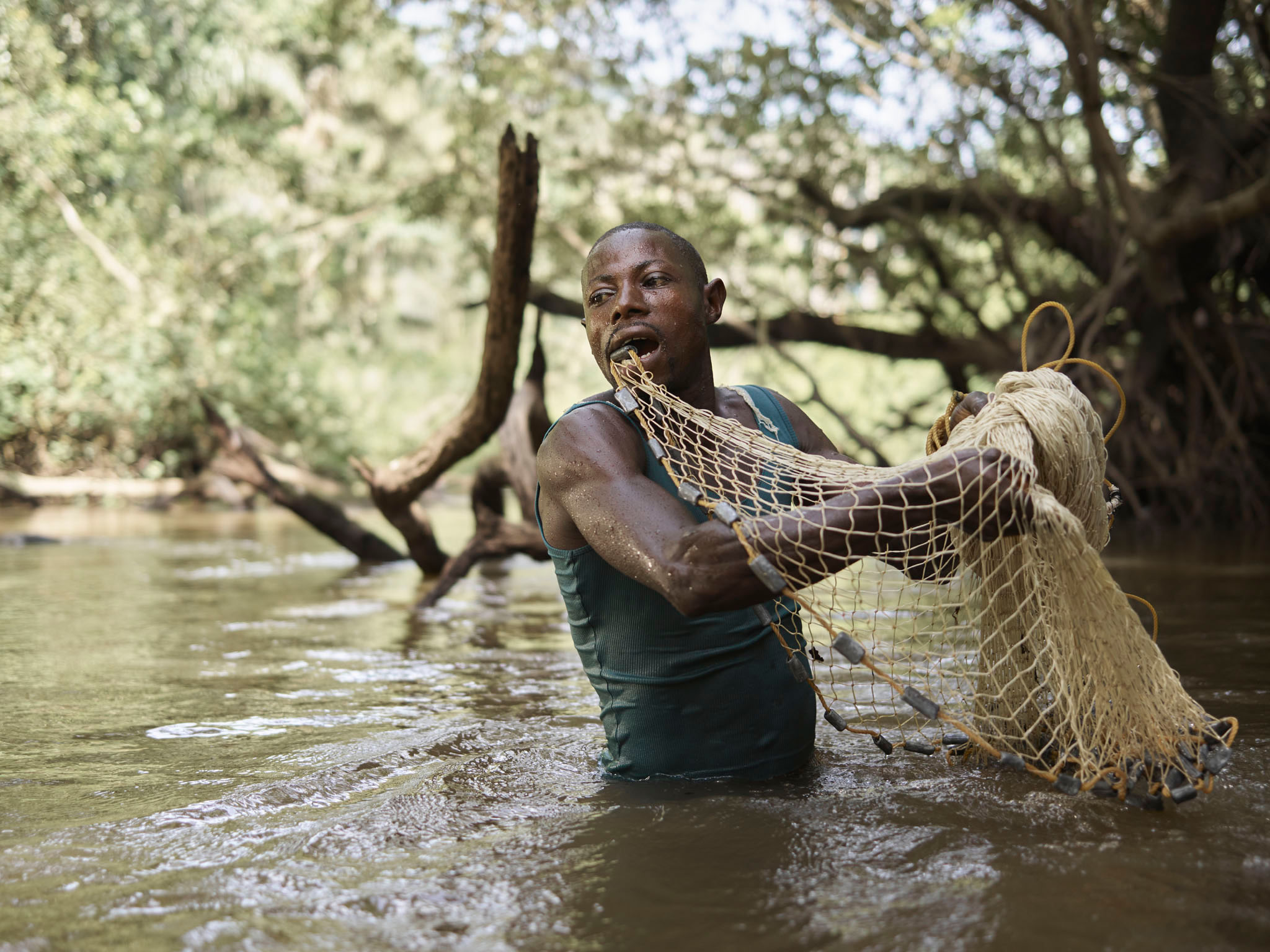
Sellu Smart, fishing in the River Male in the village of Tombohuaun. The community fish in the dry season like this, in the wet season the river is too dangrous to enter
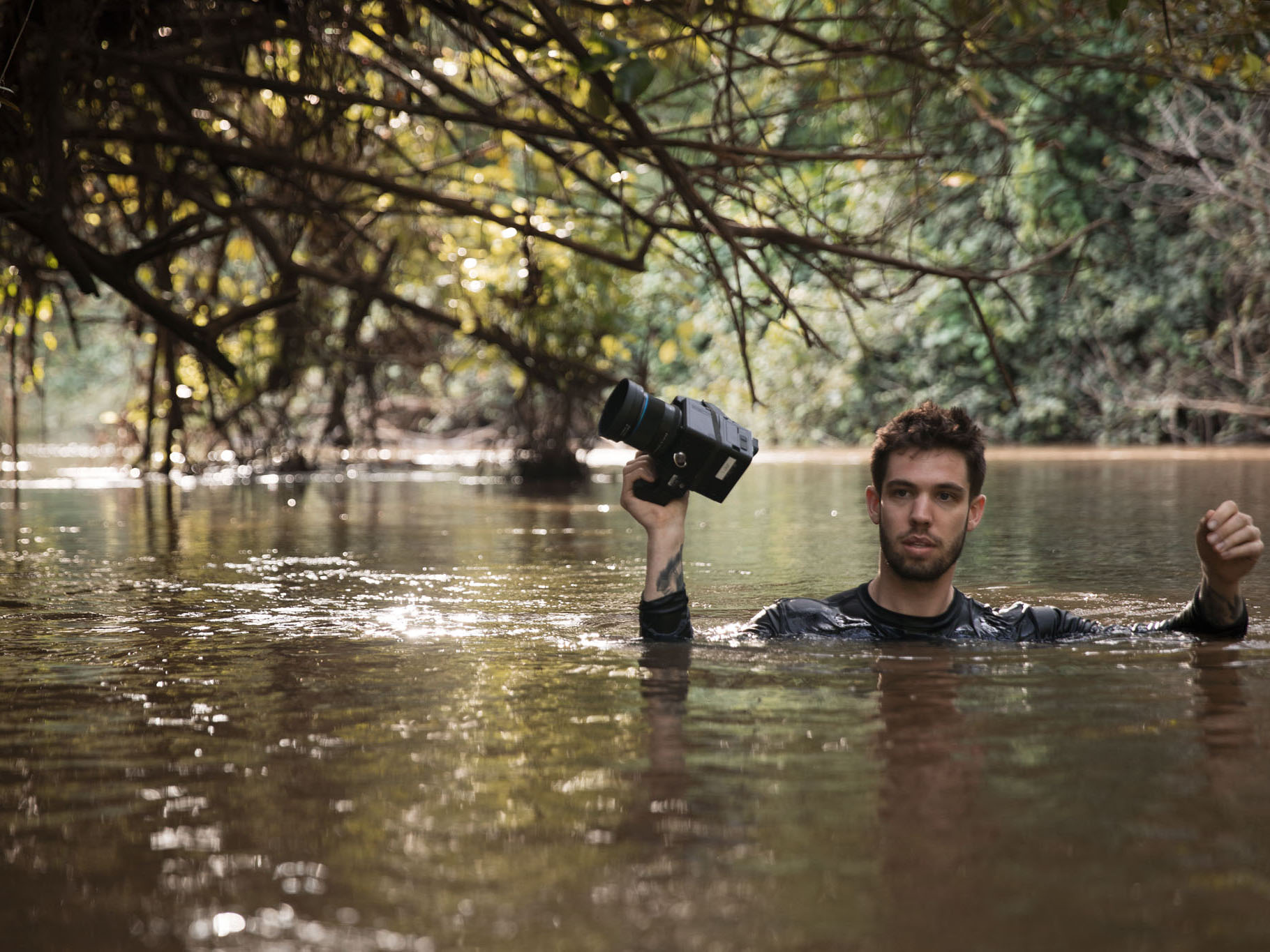
Me and my camera carefully tiptoeing through the river. Photo by Jesse Korman
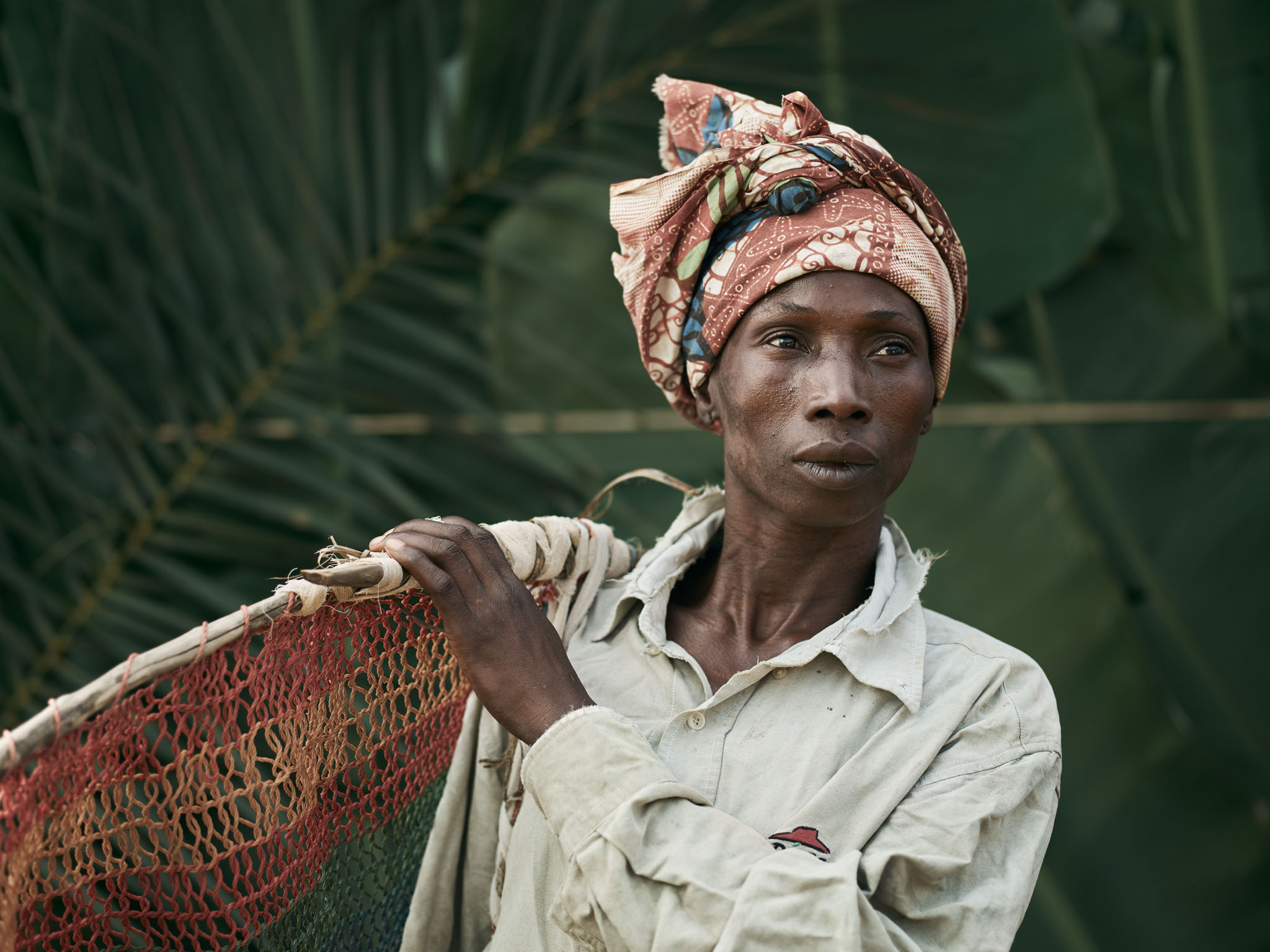
Massa Kennie, holding home-made hooped nets used for fishing
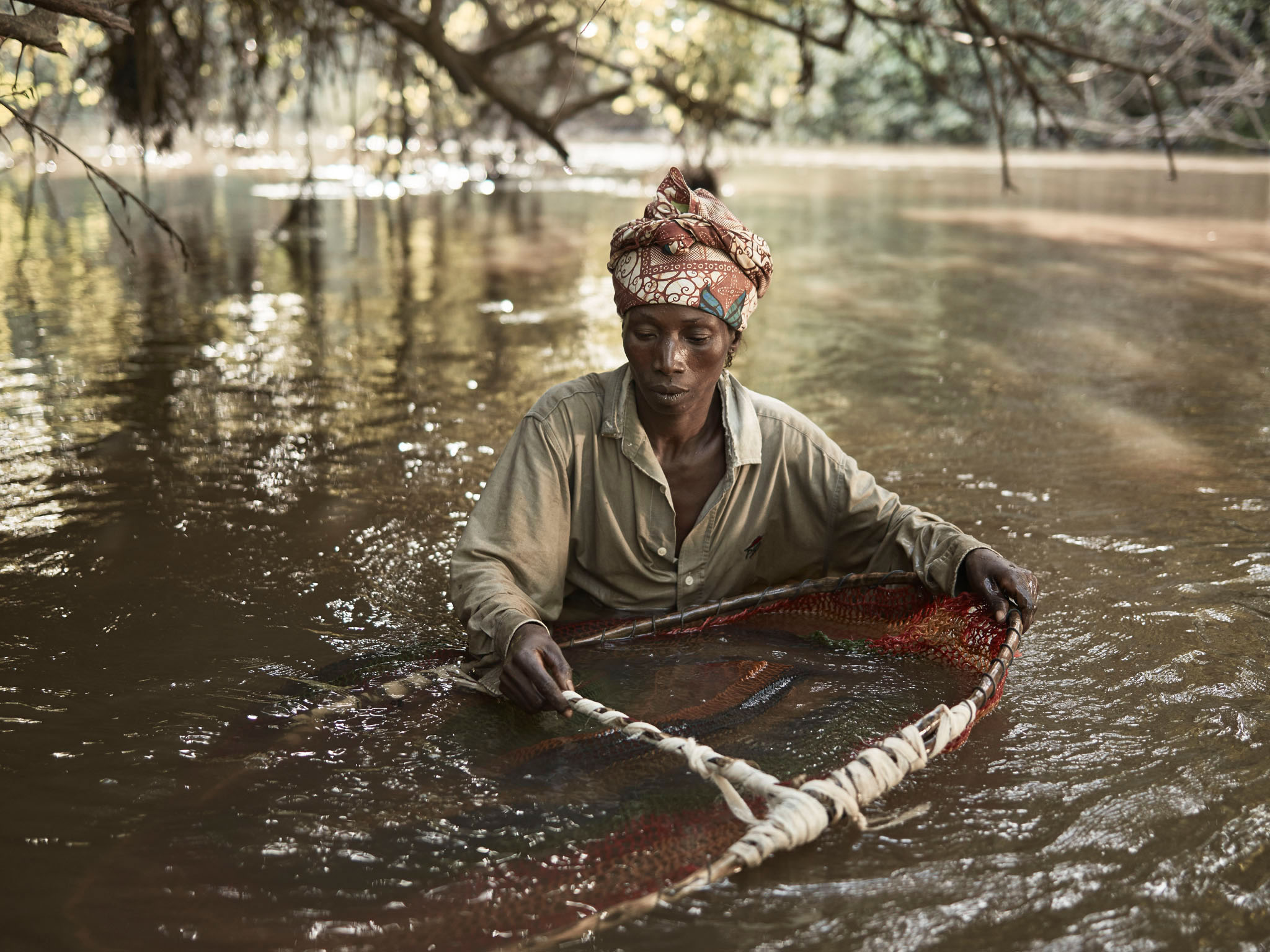
Massa Kennie, fishing using home-made hooped nets in the River Male near the village of Tombohuaun. It takes two people to fish this way and usually a lot of patience
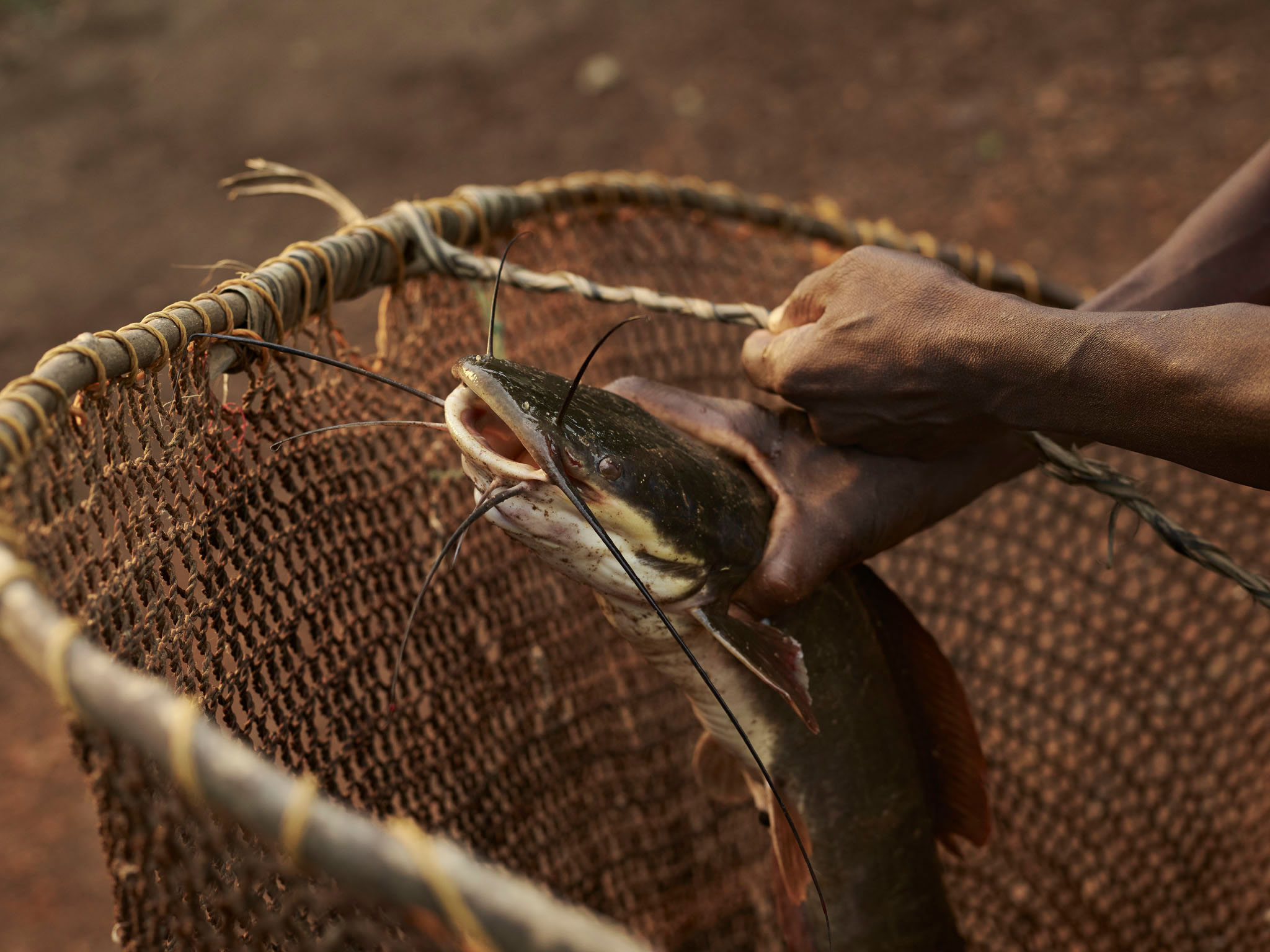
Matu, 40, holds a catfish, caught from the River Male in the village of Tombohuaun
Ultimately the images went toward an uplifting and innovative fundraising campaign that breaks out each character in the community, tells their individual stories, and inspires admiration and hope rather than pity and sadness. It was a dream project for me, working with a well-respected water charity that does thorough, responsible work, and an overall lovely two weeks in the rainforest with the people of Tombohuaun.
Donations to WaterAid’s Untapped appeal will be doubled by the UK government until January 31st: www.wateraid.org
JL
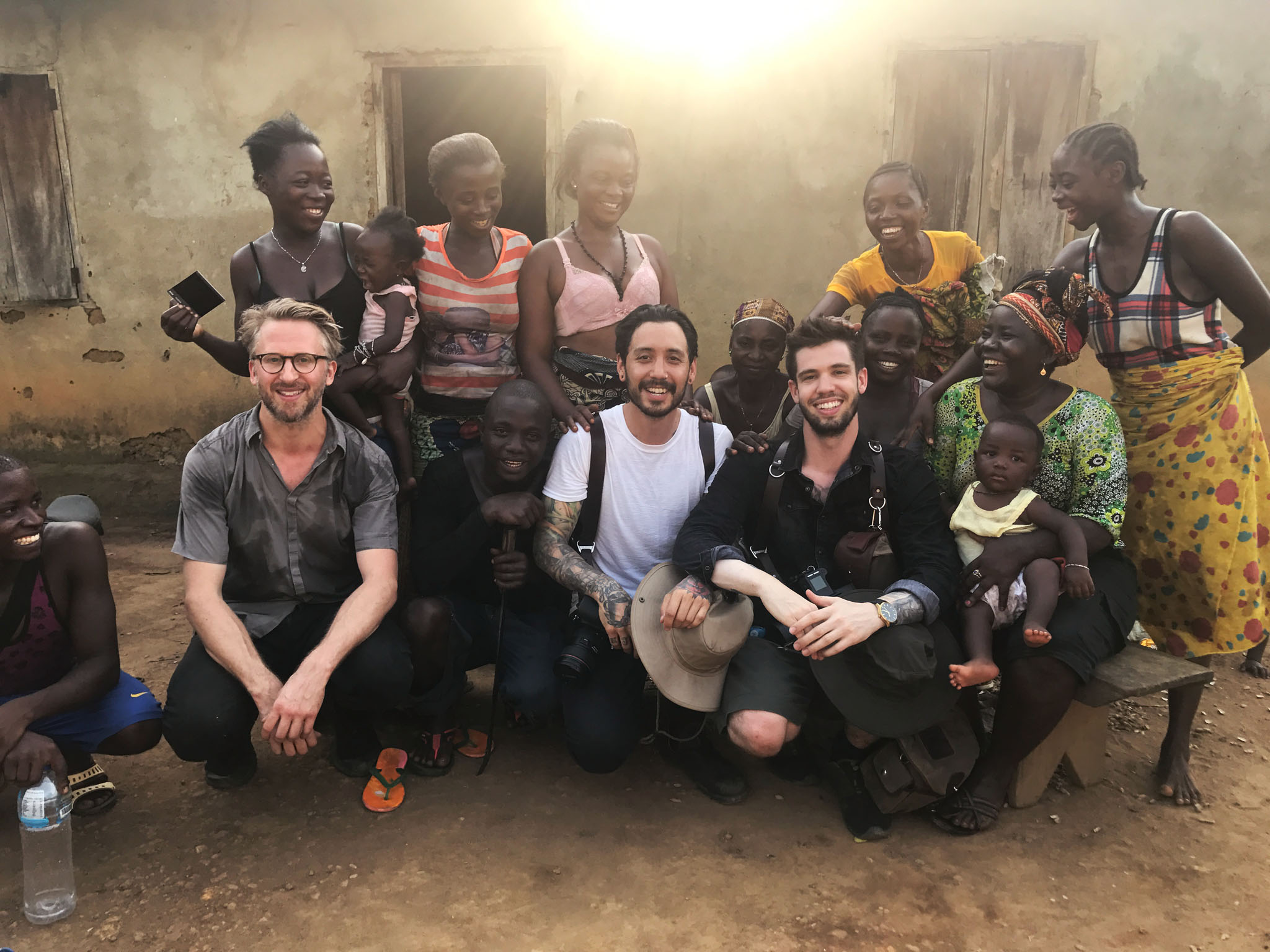
Neil, Jesse and I with the warm people of Tombohuaun

The portraits featured today in the Guardian.
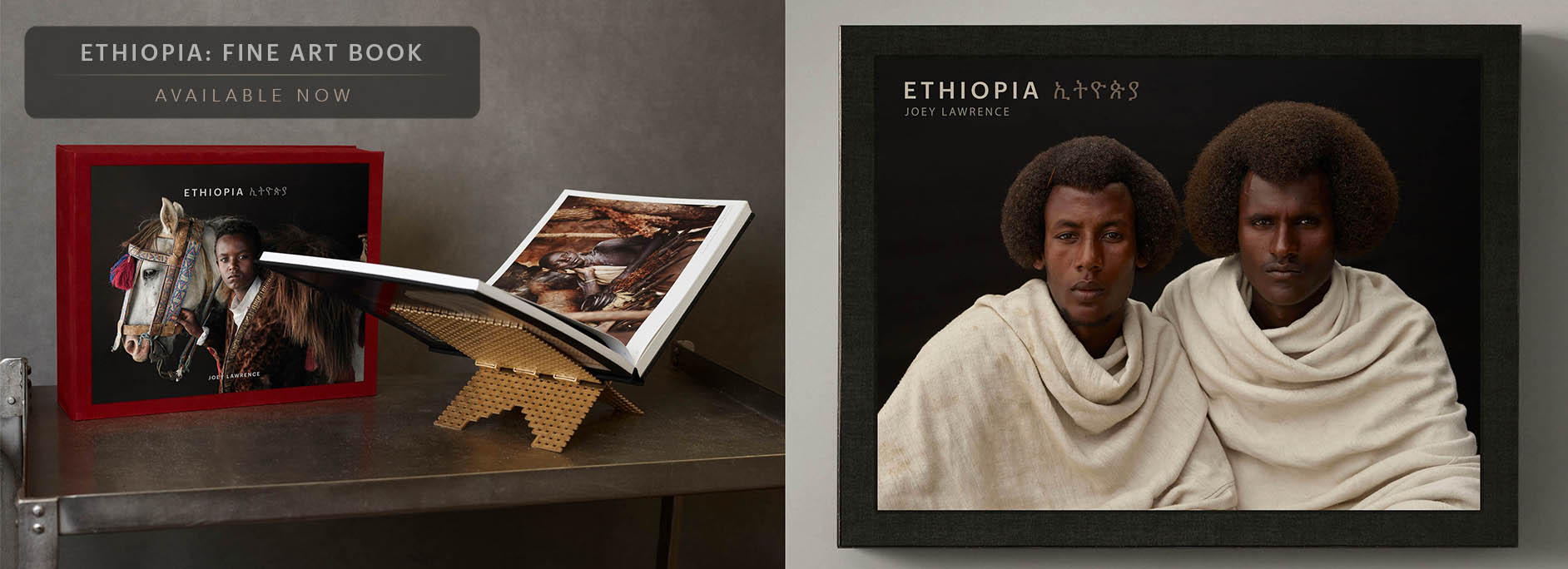
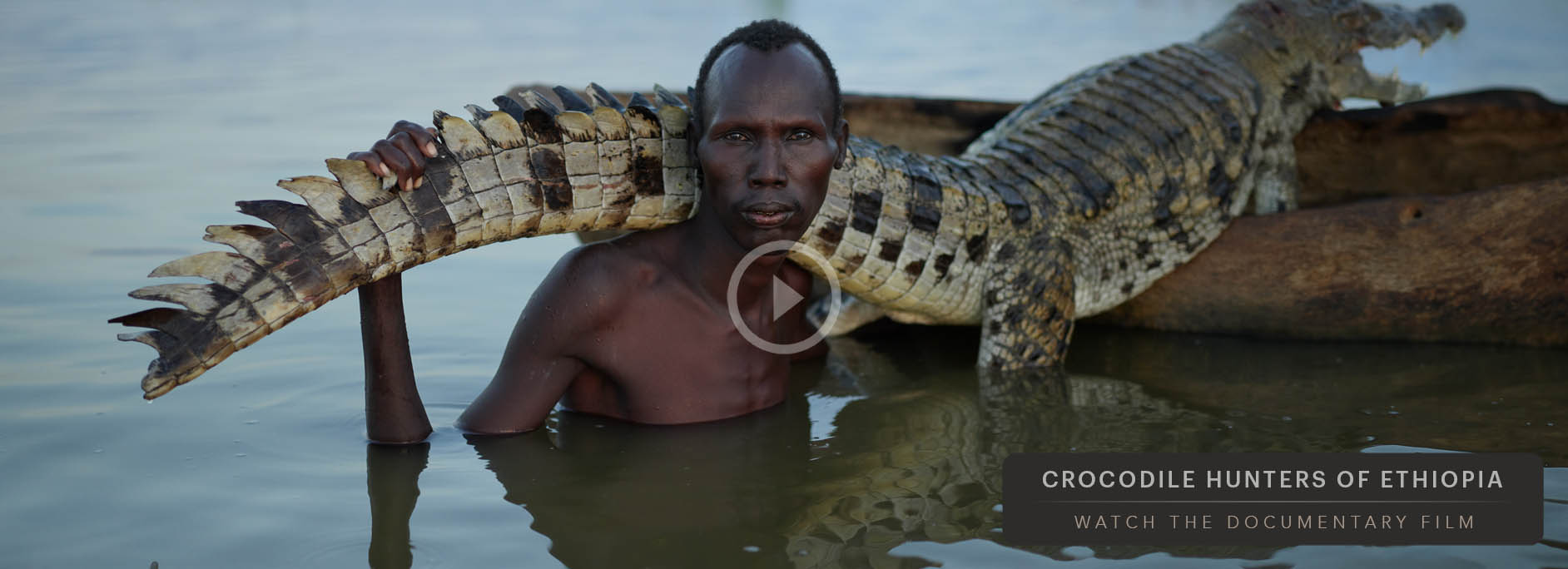
ADD A COMMENT (38)
Simon Carriere // November 30, 2017 18:00
Thanks for taking the time to write and share this story. Love seeing you behind the scenes. Can we expect a dudewithcameras episode? Be Great.
Brandon // November 30, 2017 18:43
Joey as always you do amazing work. I'm glad I got to meet you at the RGG EDU event.
Arthur Rosa // December 01, 2017 01:55
Wow! You amaze us with every piece of photography that you put out, Joey! Congratulations man! It's really impressive the amount of work that you put in those pictures.
Virginia Maskell-Fantasia // December 01, 2017 04:03
Wonderful story told with fantastic photography!! What an adventure! Glad I stopped to take the time to read. Well done.
Jarrod Tobeck // December 01, 2017 06:37
Incredible images Joey! The story and the way you capture your portraits are truly amazing!
Martin // December 01, 2017 10:18
Joey, your work is always amazing. It inspires me every time i see one for your series. Would be great to see more behind the scenes content from you. But i know that your projects take a long time to plane and execute. Best wishes from Germany!
Martin
Jan Bella // December 02, 2017 03:31
Wow! Bringing attention to needs of millions of people in the world whom lack the necessities like clean drinking water, food and safe environment to live in is so important. Photography must be the best medium to get the message across. A captivating story with fantastic imagery, well done and thanks to all involved in bringing the story to masses. All the best from UK Jan Bella
Melissa // December 03, 2017 08:14
Loving so many things about this shoot and journal of your trip. The portraits of the plantation capture the sense of community so well and the lighting is so peaceful. Beautiful tones and movement. Also I’m super impressed with that badass but simple ladder they made for you!! How did you avoid issues with the water yourself ? Did you guys bring in a massive amount for the 2 weeks? How do we contribute to this project? Through water aid? Are you doing any print sales? Much love jo!
Pinelopi // December 03, 2017 10:26
I discovered you through your documentary in Varanasi. Since then I follow your amazing work!!
This story and your photos are incredible!!! My favourite one is the barefoot climbing the tree! Awesome!
Roman // December 03, 2017 11:24
Very interesting works, light, color, details, life, portraits!
Travis Tank // December 03, 2017 12:39
Ive followed your work forever and love seeing your projects! Keep them up and if you ever head to Papua New Guinea I'd love to see what you come up with in that rainforest!
Gabriel Mundaka // December 03, 2017 13:33
Amazing work you inspire me thank you so much.....
Tomas Adam // December 03, 2017 18:00
Awesome work Joey! It's clear you love these adventures.
Carolina // December 03, 2017 18:23
Just WOW... some emotionally ravishing, certainly strikes the soul...
mike // December 03, 2017 18:29
I can't quite pin down what medium format camera that is. Anyone know?
Teri Erbes // December 03, 2017 18:30
Please keep on blogging! It's a pleasure to read your narrative and no need to say but I'll say it, every single one of your photos are amazing! I felt as if I spent time in Tombohuaun myself. Thank you!
Joey L. // December 03, 2017 19:48
Thanks everyone for the comments, I appreciate it. Here are some answers to the questions- 1) Melissa: "How did you avoid issues with the water yourself ?" most of our meals were made locally, so we had to boil the cooking water. But we did bring a whole bunch of bottled water for drinking as well.
2) Melissa: "How do we contribute to this project? Through water aid? Are you doing any print sales?" There is a link within the blog post to donate to WaterAid, and all contributions will be doubled by the UK government until January 31st. To help support my own work, please visit www.joeyLshop.com 3) Mike: "I can't quite pin down what medium format camera that is. Anyone know?" It is a Phase One XF body with IQ250 back.
MP Singh // December 03, 2017 21:49
Keep up the great work, so inspiring !!!
Jean-Francois Rodrigues // December 03, 2017 23:08
Fantastic Photography, but that's what is always expected from your work. Truly one of the greats your generation. Congrats on these amazing photos
Luissaoroz // December 03, 2017 23:32
Excelent work. Thank you for the passion, the inside, the investigation. Good luck, keep it coming.
Ulf Rugumayo Amundsen // December 03, 2017 23:34
Big fan of you works Joey.
I have a big heart for Africa and have been working as a guide in Africa since 1992, mainly in South Africa, Namibia, Uganda, DRC and Rwanda. Your images really catch the spirit of the people and places you visit.
I look forward to your next project.
Botagoz Koshim // December 04, 2017 01:17
Hello Joey!
Stunning work! Thank you very much for sharing these beautiful photos and writing such a story. My personal favourite one - Nancy, 6 with her doll. Amazing!
Looking forward to your next project.
Bram Berkien // December 04, 2017 02:28
Well this is just stunning as usual. Your use of light and choice of subject matter are one of my major sources of inspiration. I love how you supplement commercial work with humanitarian projects. Speaking of which, I would actually love to read more blogs on some of the more commercial jobs you do, like maybe the Lavazza one or the US Army. Hook me up here ;)
Walt Childs // December 04, 2017 03:24
Joey, love your photographic work and the behind the scenes photos. Your work is inspiring and tells a much better story than words alone could ever express.
Nina Andrews // December 04, 2017 09:39
Great body of work!
Marios Forsos // December 04, 2017 23:51
You are a true inspiration, not only for what you do, but how you do it! I love absolutely everything about your work! Thank you very much for sharing!
Juan // December 05, 2017 18:32
Joey
thanks for sharing. This is really amazing work. You captured a village with hope written all over their faces.
Michele Mockus // December 11, 2017 08:26
Thank you so much for sharing..what beautiful photos!
Hooman Mesri // December 11, 2017 15:42
Joey, I am pretty sure they knew who they should hire for this type of work. It wasn't at all because of being a good photographer which you absolutely are, but only because of the love of engaging with people no matter who or where in the world and of course passion which you got tones of it. That makes your work interesting and unique. Kudos my friend,
luca ricci // December 12, 2017 09:31
You Rock! as always inspiring work JoeyL.
how did u take the aerial pics?
Grazie
nigger master 2000 // December 20, 2017 23:17
Hey Joey,
Love your work. But you gotta stop working with these niggers man.
Sascha Makowski // January 01, 2018 02:52
Great work! Thank you!
Thomas // January 25, 2018 09:42
You are doing an admirable job. What happiness to follow you!
Vijay // January 30, 2018 23:07
Amazing work!!
Girish // May 02, 2018 23:08
Fantastic set of pictures Joey. So much to learn from all of this! Especially to value what we have. Thanks for writing in detail :)
Sylvester Othuke // September 17, 2018 07:06
I am honestly happy to stumble upon this fantastic informational photoshoot. There is nothing worth reporting if not to enrich lives in a secluded part of the world. I would love to share more of this emotional information on my site if granted permission to do so. Nice work. God bless your efforts.
Also, I would like to know the latest updates on this story so that I can connect with the livelihood of the people of that region. Thanks
kamie photography // January 06, 2019 23:17
Life is like a camera. Just focus on what’s important and capture the good times, develop from the negatives and if things don’t work out, just take another shot.
Regards
kamie photography
kamie Duabi // January 06, 2019 23:19
A Photography is different things to different people. Amazing collection of photo , perfect click
Regards
kamie photography
https://www.kamiephotography.com/
Your comment has been posted